- Share full article
Advertisement
Supported by

A Summer Rite in Spain: Coping With the British Tourist Invasion
On the front lines of a low-cost resort, Spanish residents complain that U.K. visitors drink too much and don’t spend enough.

By David Segal
Reporting from Magaluf in Mallorca, Spain
A fit and ruddy 19-year-old with blond hair and a sheepish smile, James Henderson is tanning on a beach in Magaluf, a town on the Spanish island Mallorca that has long been the destination of choice for young Britons in search of a boozy holiday in the sun. Asked to recount the revelry of the day before, he grins like a man who has just completed a decathlon and is pretty psyched about his performance.
There was a few hours of “pre-drinking,” as he put it, at his hotel, then on to Punta Ballena, a crammed and gritty strip of pubs, tattoo parlors and lap dance emporiums that bursts with action until dawn every summer day. By the time he and his vacation buddy headed to bed, at 3 a.m., they had each knocked back roughly 20 drinks over the course of 15 hours.
“I had a bit of a strange taste in my mouth this morning,” Mr. Henderson said, proudly describing the minimal aftereffects of this marathon, “but nothing too bad.”
Every summer, Magaluf crawls with young British people in search of a bacchanalia, and they find one in what is essentially a slab of the United Kingdom set in the Mediterranean, except seedier than anything in the dingiest corners of London. There are also G-rated home comforts, like kebab shops, Yorkshire pudding and pubs, all at strikingly affordable prices.
The annual swarm is both a financial boon and a curse. The Britons here are not the hooligans who occasionally get blanket bans from foreign cities hosting U.K. soccer teams for fear of violent clashes. All of the fun in Magaluf gets posted to Instagram, which means it tends to be more photogenic than destructive.
But young British travelers are notorious for drinking a lot and spending little, and local reaction to the hard partying herd in Magaluf is split between come hithers (from hotel and bar owners) and go yons (from residents).
It’s a source of continuing tension, not just here but on other islands and in the country’s most beloved cities, including Barcelona and Madrid. Tourism accounts for more than 10 percent of Spain’s annual gross domestic product, the European Commission reports, and the United Kingdom provides the largest chunk of that windfall. More than 18 million British people visited Spain in 2019, about one-quarter of the total population, according to U.K. government statistics .
Spanish officials have already predicted that 2023 will break records .
“We don’t have factories here,” said Pepe Carbonell, an owner of Bondi Beach, a bar and restaurant in Magaluf. “We live off tourists, and the only bad customers are the ones who don’t come to Mallorca.”
Many tipple in moderation and spend plenty. But places like Magaluf are hotbeds of what is known here as the “tourism of excess.” The most notorious section of all is Punta Ballena, which has generated tales of hedonism for more than a generation.
Sexual assault is sadly common. There have also been fights and plenty of what is known as “balconying,” the practice of leaping from a balcony onto another balcony or into a swimming pool. (It’s popular enough that the U.K. Foreign, Commonwealth and Development Office published a warning against it .) Public nudity is so prevalent on this strip that signs here state, “Wear no clothes on the street, penalty 400 euros.”
“There are residents who live here, work here, take their kids to school here, and they have to see drunk people all the time, drugs, prostitution,” said Margalida Ramis, campaigner for GOB, a conservation nonprofit. “Living in this reality is like living in hell if you want a normal life.”
Typically, officials here broach the topic of low-end British tourism diplomatically, aware that tastes change and that if young people abandon places like Magaluf, the economic consequences will be severe. The future looks precarious. Like much of continental Europe, Spain has been sweltering in record heat this summer, and U.K. tabloids have suggested that tourists are choosing more temperate climates, even if they offer a fraction of the excitement.
“Costa Del Dull,” read a mid-August headline in The Daily Star, a London-based newspaper, riffing on the name of a southern coastal area of Spain, above a photograph of Hercule Poirot, the fictional Belgian detective. “Tourists swap traditional holiday favorites for boring Belgium to beat global warming crisis.”
Some Spanish politicians are too annoyed by the putative boorish behavior of the British tourists to exercise restraint.
“We have areas of our islands that are clearly marked by the tourism of excess,” Iago Negueruela, counselor of tourism of the Balearic government, which includes Mallorca, told elDiario.es, a Spanish digital newspaper. “That is what does not have to come back, and we will do everything possible so that it does not.”
Such sentiments led to a decree, passed by the regional government in January 2022, to curtail shenanigans in what were officially labeled red zones on three islands, including Mallorca. Party boats — a cruise with a D.J. for a fixed price and an open bar — were banned. So were bikini-clad women dancing in the windows of bars. Two-for-one drink specials were prohibited, too.
The goal was to increase the amount of luxury tourism, and some pricier hotels have popped up at safe distances from Punta Ballena. But if Magaluf is any indication, once a place is renowned for low-end getaways, the label is hard to shed. Plenty of vendors still cater to the bargain hunters. Mr. Henderson, for instance, bought a round-trip flight and three nights at a hotel for about $600, a price that included three meals, with three drinks at both lunch and dinner.
“And a shuttle to the airport is 10 pounds,” Mr. Henderson’s friend, Toby Euston, 18, said. “That’s why people come here. It’s cheap, and there’s nice weather.”
Deals on alcohol remain ubiquitous on the strip. On a recent Tuesday, around 1 a.m., the pavement was chockablock with tourists and what are known here as “reps.” These are bar employees whose job is to stand in the middle of the street and rope in passers-by.
It gives the place the feeling of a noisy, roiling bazaar where the only commodity for sale is liquor. A typical pitch: a triple shot and two more shots for seven euros. Every bar has a variation of this budget beverage offer. And music. A bunch of bars offer “silent disco,” where people listen and dance to music while wearing headphones.
The entire scene is familiar to Daniel Briggs, an ethnographer from Northumbria University in England, who spent four summers studying young British people in Magaluf for research underwritten by the Foreign Office, the arm of the U.K. government that safeguards citizens abroad. He saw plenty of fights and more than a few accidents that led to hospitalizations.
To him, the question of why British youngsters overindulge in Magaluf isn’t a mystery. They are generally taking their first vacation without parents, and that creates a sense that everyone is off the leash. And drinking has been central to British culture for centuries. Businesses here understand that, Professor Briggs said. Magaluf is carefully designed to exploit its core demographic.
“Bar owners know they’ve got a group of people who are young and ready to drink, and they’ve presented all sorts of options for them that encourages the worst behavior,” he said. “Obviously, this is a business.”
Many Britons here know that their reputation for unhinged behavior precedes them. Few seem to mind.
“I think British people don’t really care,” said Bella Fisher, a 21-year-old from Britain, who was walking near the beach with a friend. “They have, like, no standards. Like, they don’t really care about anything.”
But aren’t British people renowned for their reserve?
“Until you get to Magaluf,” she said.
In other countries, officials have explicitly tried to wave away British tourists. Amsterdam, for instance, started an online campaign in March that showed public-service ads to anyone searching the internet for terms like “pub crawl Amsterdam.”
“Coming to Amsterdam for a messy night?” read text in one video showing a man being arrested. “Stay away.”
In Spain, anger about the British is more likely to come from residents than government officials. There’s a derogatory word for visitors from Britain — guiri . It’s a shorthand for any British person behaving in what is regarded as a stereotypically British way — namely, drinking too much, fighting, ignoring social norms like stopping at traffic lights, and spending very little money.
Occasionally, the anger bubbles into something closer to rage. “Tourists go home,” someone spray painted not long ago on a hotel in Mallorca. In some cities, posters that ooze sarcasm have been put up that encourage balconying. One uses an image of a stick figure tripping off a balcony; underneath is text ticking through the benefits of this hazardous activity.
“Prevents gentrification,” the poster reads, “reduces the risk of heart disease, is LOTS of fun.”
Some club and bar owners in Magaluf detect an anti-British bias in laws designed to curtail the tourism of excess. Gerard Pietro, owner of Capitol Bar — which features a large pink neon sign that reads “Please don’t do coke in the bathroom” — says Magaluf should embrace its image and the people drawn to it.
“If I could get 50 customers a night who only bought Dom Pérignon, I’d be the happiest owner in the world, but that is not what happens here,” he said. “We have young people, and they have the right to party.”
During a recent daytime walk through the strip, Professor Briggs said the place looked pretty much the same as when he last spent a summer here, in 2019. He walked past a fish-and-chips spot called the Chippy, and pubs with distinctly British names, like the Red Lion. He stopped briefly at a bar, the Dirty Dog, after spotting a young man seated in a chair and apparently passed out on the patio. A couple of friends hovered nearby, not especially concerned.
“Is he all right?” asked Professor Briggs.
“He’s fine,” a friend said.
“How long you guys staying for?” Professor Briggs asked.
“Forever,” came the reply.
José Bautista contributed reporting.
David Segal is a Business section reporter based in London. More about David Segal
Travel Safe

Information on Brexit for British tourists

How is tourism affected by the end of the transition period?
The following information answers the main questions that may arise on the topic.
Do I need a visa to travel to Spain from the United Kingdom?
No. As of 1 January 2021, UK nationals remain exempt from the requirement to have a visa when crossing the European Union's external borders for short-term stays (up to 90 days in any 180-day period). This visa exemption does not provide for the right to work in the Union and is subject to the reciprocity mechanism applicable to third countries.
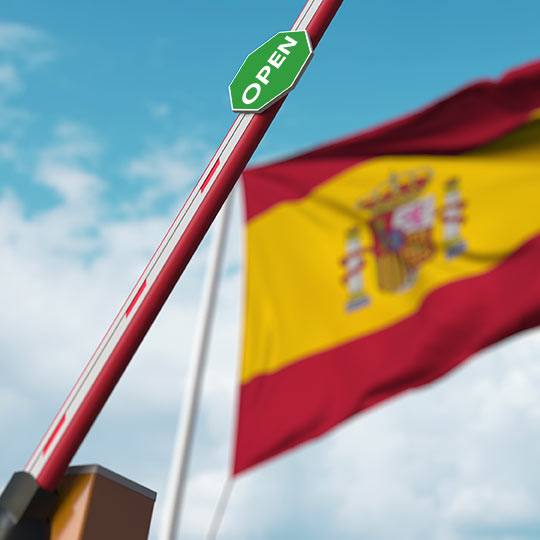
Will there be any border controls?
As of 1 January 2021, UK nationals travelling to the European Union and the Schengen area are treated as third-country nationals, and therefore subject to thorough checks at the Schengen area border. This means that intended stays in the territory of EU Member States cannot have a duration of more than 90 days in any 180-day period, and UK nationals will have to meet the entry conditions for third-country nationals.

What about travelling with pets?
You may continue to travel with your pets from 1 January 2021, though you will need the British health authorities to issue the corresponding animal health certificate, and you must also enter Spain at one of the airports or ports authorised to this effect. For dogs, cats and ferrets, a valid rabies vaccination certificate must be presented along with the animal health certificate. When returning to the United Kingdom, you will need to carry out the deworming treatment one to five days ahead of the trip. For more information, please see the page of the website of the Spanish Ministry of Agriculture, Fisheries and Food.

Will my British driving licence be recognised in Spain?
From 1 March 2022, driving licences issued by the UK authorities will be valid for driving in Spain for a period of six months. In the case of short trips or tourism, it will be six months running from the date you enter the country. For British citizens resident in Spain, this period runs from the date on which legal residence in the country was obtained. Once this six-month period has transpired, you will need to obtain a Spanish driving licence. British residents who did not apply for the exchange, renewal or extraordinary replacement of their driving licence before 31 December 2020 will have to apply for a new Spanish driving licence. For more information, please consult the on the website of the General Directorate of Traffic.

Will I have access to the Spanish healthcare system?
Yes, the social security coordination protocol of the Trade and Cooperation agreement between the European Union and the European Atomic Energy Community, for one part, and the United Kingdom of Great Britain and Northern Ireland, for the other, envisages this health cover with the UK European Health Insurance Card (UK EHIC) or the UK Global Health Insurance Card (UK GHIC). Contact the British institution to find out which document supporting your rights you are going to be issued with.

Travel plans for inspiring you
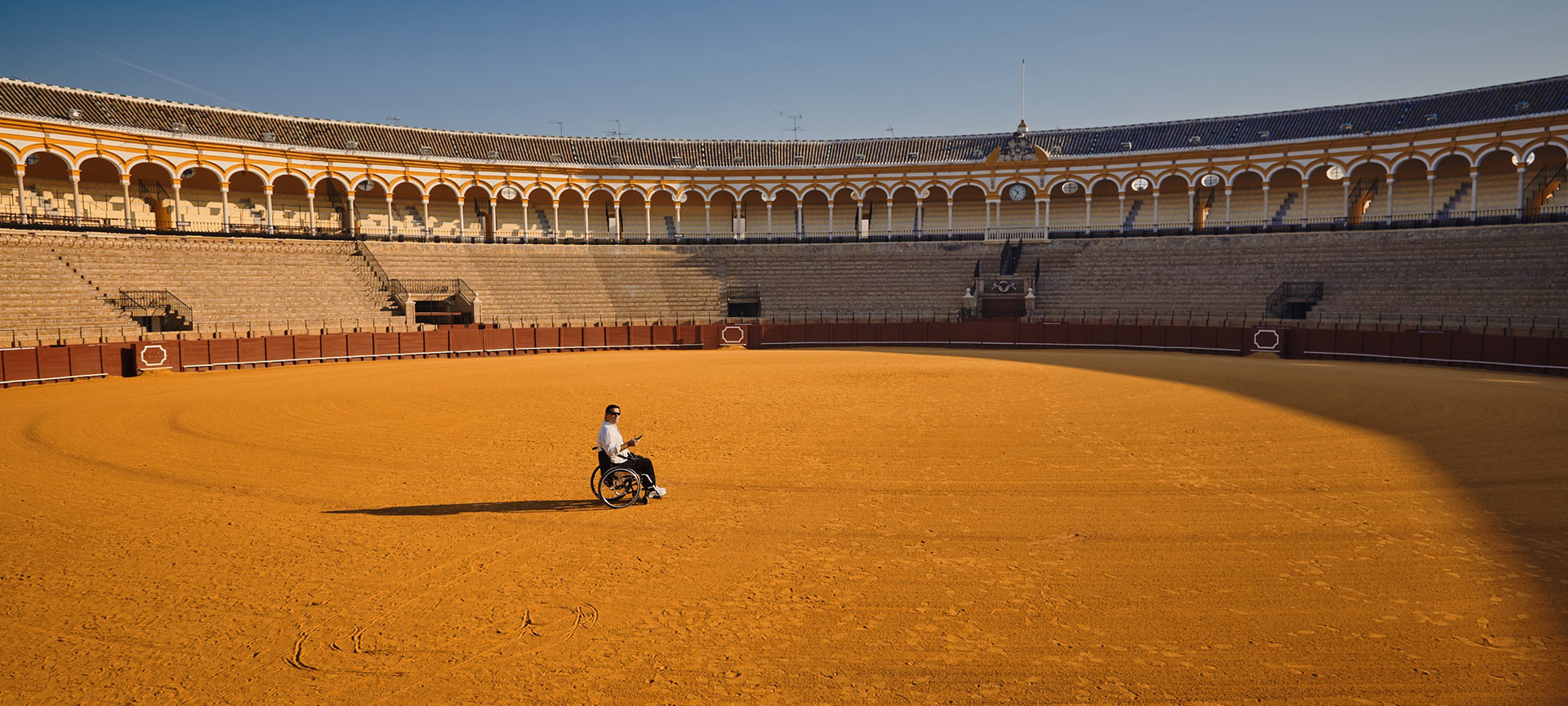
Practical information
Spain, an accessible destination for people with disabilities

Travelling Spain by road

Flying to Spain. Spanish Airports

Brits continue to be the most important tourists in Spain, new figures show

UK TOURISTS visiting Spain during the first 10 months of 2023 totalled just under 15.5 million people- an annual rise of 14.3%.
The British market has played a leading role in Spain’s tourist recovery after the Covid-19 pandemic and accounts for the biggest number of visitors from a foreign country.
The next two largest groups are from France (almost 10.4 million and an increase of 17.0%) and Germany (with more than 9.6 million, up 9.4%).
In the first 10 months of 2023, the number of tourists visiting Spain exceeded 74.7 million- an 18.2% increase on the same period last year.
If the figure for 2023 is compared with the cumulative figure for the first 10 months of 2019- before the pandemic- foreign arrivals are 0.2% higher.
The statistics for the Costa Blanca and the Valencia region are more dramatic, reaching over nine million foreign tourists up to end of October- over half a million extra than the whole of 2019.
On current trends, Alicante-Elche airport is expected to close the year with a record number of passengers to surpass the 2019 total.
The overwhelming majority of arrivals were independent travellers.
New air routes will boost figures still further with next year seeing more connections.
Last week, easyJet started the first of its Costa Blanca promotional campaigns ahead of the budget carrier opening a base at Alicante-Elche airport in 2024.
It has announced 10 new routes connect with Southampton, Newcastle, Belfast City, Zurich, Prague, Lyon, Lille, Nantes, Nice and Birmingham next summer.
Finnair has also announced that it will run three weekly flights between Alicante and Helsinki during the next high season.
- Record-breaking number of cruise ship tourists visit Spain’s Costa Blanca this year as figure surpasses 192,000
- Tourists are returning to booking hotels on Spain’s Costa Blanca, figures suggest

- Alicante-Elche airport
- British tourists dominate
- Costa Blanca
- Foreign tourists
- National News
- The Olive Press
Related Articles

Revealed: The most popular locations for British property hunters on Spain’s Costa Blanca

‘Foreign’ man and woman die on a popular beach on Spain’s Costa Blanca: Pair were pulled from the water in a red flag zone

Revealed: The huge rodent spotted roaming irrigation canals on Spain’s Costa Blanca

Alex Trelinski
Alex worked for 30 years for the BBC as a presenter, producer and manager. He covered a variety of areas specialising in sport, news and politics. After moving to the Costa Blanca over a decade ago, he edited a newspaper for 5 years and worked on local radio.
Leave a Reply Cancel reply
You must be logged in to post a comment.
This site uses Akismet to reduce spam. Learn how your comment data is processed .

Woman in Spain goes viral after swallowing a TOOTHBRUSH while choking on ham

Spain’s favourite Christmas toys revealed as sales are set to rise by 2%
Latest from costa blanca.
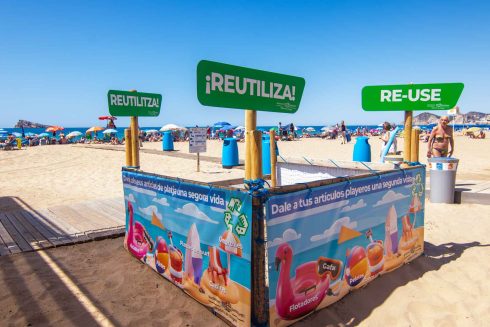
Benidorm introduces beach recycling point: Tourists can leave umbrellas, towels and other items at the end of their holiday

Fake clergyman cons thousands of euros out of parish priests on Spain’s Costa Blanca with sob story of dying father and inheritance
More from the olive press.

WATCH: Airport chaos in Spain as ALL flights are cancelled, delayed or diverted at major travel hub after runway is submerged under water amid freak storms

Agitated Brit threatens to stab taxi driver and then gets locked in on a Mallorca bus before police arrest him
The strict new rules for holidaymakers travelling to Spain
- Tuesday 21 June 2022 at 3:11pm

Spain is one of the most popular destinations for British holidaymakers seeking some sun and sea.
But the country has long suffered from a minority of tourists who disrespect local culture and engage in anti-social behaviour, even if unintentional.
This has prompted a growing number of Spanish towns and cities to tighten up laws ahead of this summer - which is expected to be an extremely busy season after Covid rules were eased .
Here are some of the new rules British holidaymakers travelling to Spain should look out for:
Changing beach rules
Vigo, in the Galicia region of north-west Spain, has updated beach regulations for this summer season, as part of a drive to clean up local hotspots, often popular with tourists.
The region's council has, for example, made the use of the outdoor space for lavatory purposes an offence, which carries a maximum fine of £650.
"Physiological evacuations in the sea or on the beach" will constitute a breach of health and hygiene laws, the new regulations say.
Fines for using soap in water on the beach, using grills or gas cylinders, or discarding litter of any kind in the sand are also among Vigo's beach bylaws.
Javea in Alicante has banned smoking on all of its beaches to improve environmental protection on the coast, just as Barcelona city council did last year.
At all Spanish beach showers, it is illegal to wash with soap and shampoo and you can be fined up to £620 if caught doing so.
Want a quick and expert briefing on the biggest news stories? Listen to our latest podcasts to find out What You Need To Know
Dress codes
Eleven seaside restaurants on the popular holiday island of Mallorca have banned tourists wearing certain clothes associated with “drunken tourism”.
In these restaurants, most of which are in the Playa de Palma, shirtless, costumed or football-jersey-clad travellers will no longer be admitted entry, according to Juan Miguel Ferrer, the chief executive of Palma Beach.
Swimwear, trunks and novelty accessories bought from roadside vendors - such as gold chains - are also said to be banned.
"Since May 10, we’ve been suffering the arrival of large groups of tourists who are only looking to get drunk in the streets, or on the seafront or even on the beach,” Mr Ferrer said.
“You’re not going to come here in beach clothes or come straight from drinking in the streets."
Many parts of Spain have also clamped down on people walking around the streets bare-chested.
People face a maximum fine of around £250 in Barcelona and Mallorca, for example.
Some local councils will also impose fines if you’re caught wearing swimwear on the seafront promenade or the adjacent streets, according to travel advice issued by the UK government.
Alcohol consumption
In April, tourists were told that alcohol consumption in all-inclusive hotels in parts of the Balearic Islands in Spain was to become capped. Under the rules - which apply to Magaluf, Playa de Palma in Mallorca and San Antonio in Ibiza - guests can only drink alcohol during mealtimes.
There is a maximum of six alcoholic drinks per person per day that can be served and these will only be provided during lunch and dinner. The law also prohibits “off-licence” sales between 9:30pm and 8am.
You can find more foreign travel advice for Spain here .
- Entrepreneurs
- Moving to Spain
- Coronavirus

Revealed: the most British cities in Spain
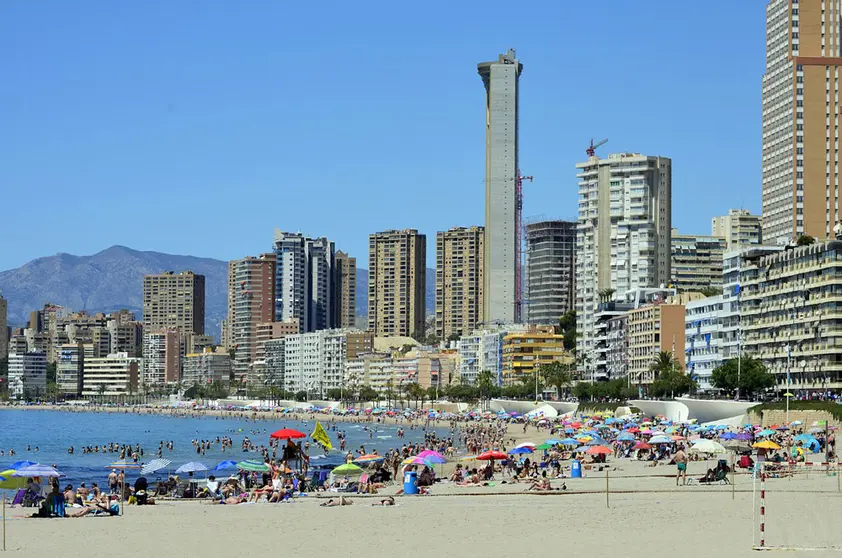
Spain has always been a favourite holiday destination for the British people. And what’s not to love about this country? Sunshine all year round, amazing beaches, …
No wonder so many British people decide to move abroad and live the Spanish dream! But despite all of Spain’s charms, sometimes you can’t help but crave a Sunday roast or a decent pint while you’re abroad.
Spain-Holiday , a search engine for holiday rentals in Spain, decided to find out which are the most British cities in Spain.
All Spanish cities with more than 50,000 inhabitants were considered, and the ranking was drawn up using two main data points: the percentage of residents with British nationality, and the ratio of British pubs, shops and similar establishments per inhabitant. The ranking reveals that:
- The Costa Blanca town of Benidorm is the most British city in Spain!
- The Costa del Sol dominates the ranking, with 5 towns in the top 10.
- Brits prefer to settle in popular tourist destinations, staying in areas that are already well-known and avoiding inland cities.

Top 10 most British cities in Spain
1. benidorm, alicante (costa blanca).
As arguably the most famous holiday destination in Spain, it shouldn’t surprise us that Benidorm takes the title of most British city in Spain.
Benidorm was one of the earliest holiday resort towns to exist, drawing tourists to its shore since 1925 . A lot of British families have been spending their summer holidays in Benidorm for generations! So when deciding on a place to settle down, a lot of expats stick to their familiar holiday haunts and move to sunny Benidorm.
During the summer, the British community in Benidorm easily triples in size thanks to the many tourists, but even outside the high season the city has a lively community of British expats who permanently live there.
With several British supermarkets that bring your familiar brands and favourite products to the Costa Blanca, and a good number of British restaurants that serve lovely Sunday roasts and full English breakfasts, Benidorm truly is a “home away from home”.
Benidorm’s British stats:
- Permanent residents with British nationalities: 3,389 (4.90% of the total population).
- British shops, restaurants & pubs: 43.
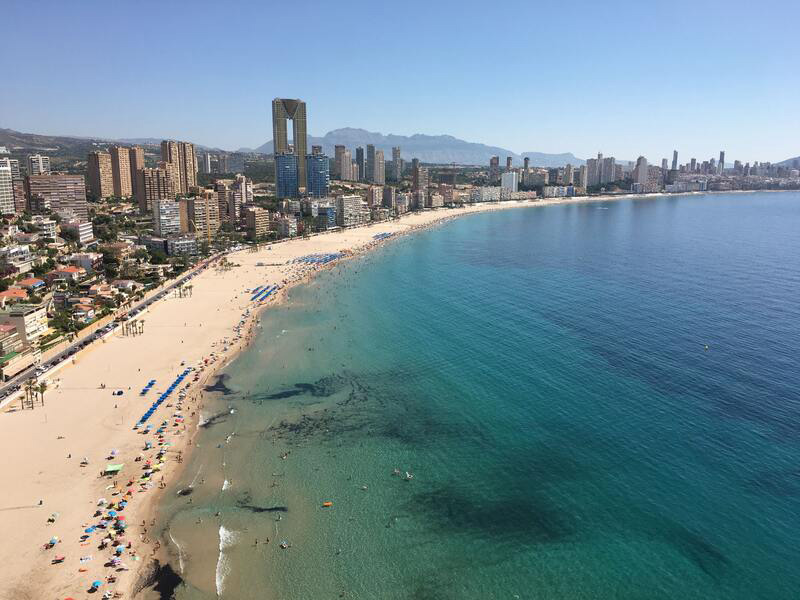
2. Orihuela, Alicante (Costa Blanca)
The second most British city of Spain lies just to the south of Benidorm: Orihuela, a charming town near Torrevieja. It is divided into two parts: Orihuela Costa, the part of the town located directly by the sea (and the most popular location for Brits to settle down) and the old medieval part of Orihuela a few minutes inland.
Orihuela has always drawn plenty of expats because of its Blue Flag beaches and the nearby national parks.
This town is also well-connected with the rest of the country and Europe, thanks to two nearby international airports, another reason why it’s so popular with Brits wanting to move to Spain!
Orihuela’s British sports bars will make sure you won’t have to miss a single Premier League match, and your trusted British brands are always available in the British 'supermercados.'
Orihuela British stats:
- Permanent residents with British nationalities: 10,025 (12.70% of the total population).
- British shops, restaurants and pubs: 18.
3. Benalmádena, Málaga (Costa del Sol)
The Costa del Sol finally makes its appearance in this ranking with Benalmádena, which closes the top 3!
In summer the city is taken by storm and its beaches fill up with tourists, but in winter, Benalmádena becomes a sleepy town where expats and locals live side by side .
The town has a very international population that is divided between 3 main areas: Benalmádena Costa, known for its beaches, Benalmádena Pueblo, quiet and located on the slopes of the Malaga mountains, and Arroyo de la Miel , located in between the previous two and with plenty of entertainment for locals and tourists alike.
While people from all over Europe enjoy life in Benalmádena, Brits are one of the most prominent nationalities. Here you will find the most British shops and bars in all the Costa del Sol, converting Benalmádena into the British centre of the Costa del Sol!
Benalmádena British stats:
- Permanent residents with British nationalities: 3,420 (4.87% of the total population).
- British shops, restaurants and pubs: 31.
4. Mijas, Málaga (Costa del Sol)
For the next town in the ranking we stay on the Costa del Sol, because Mijas is the fourth most British town in Spain!
While Mijas Pueblo has always attracted many visitors because of its natural beauty and traditional Spanish architecture, you will find that most British expats have settled in its coastal area, also known as Mijas Costa .
This beautiful piece of coastline has attracted many expats wanting to experience Spanish living.
Thanks to its central location on the Costa del Sol, living in Mijas makes it easy to explore the Andalusian coastline and the 'pueblos blancos' located inland. Combine this with marvellous weather and a welcoming British community , and you get one of the cities with the highest percentage of British residents of the Costa del Sol!
Mijas British stats:
- Permanent residents with British nationalities: 8,610 (9.93% of the total population).
- British shops, restaurants and pubs: 3.
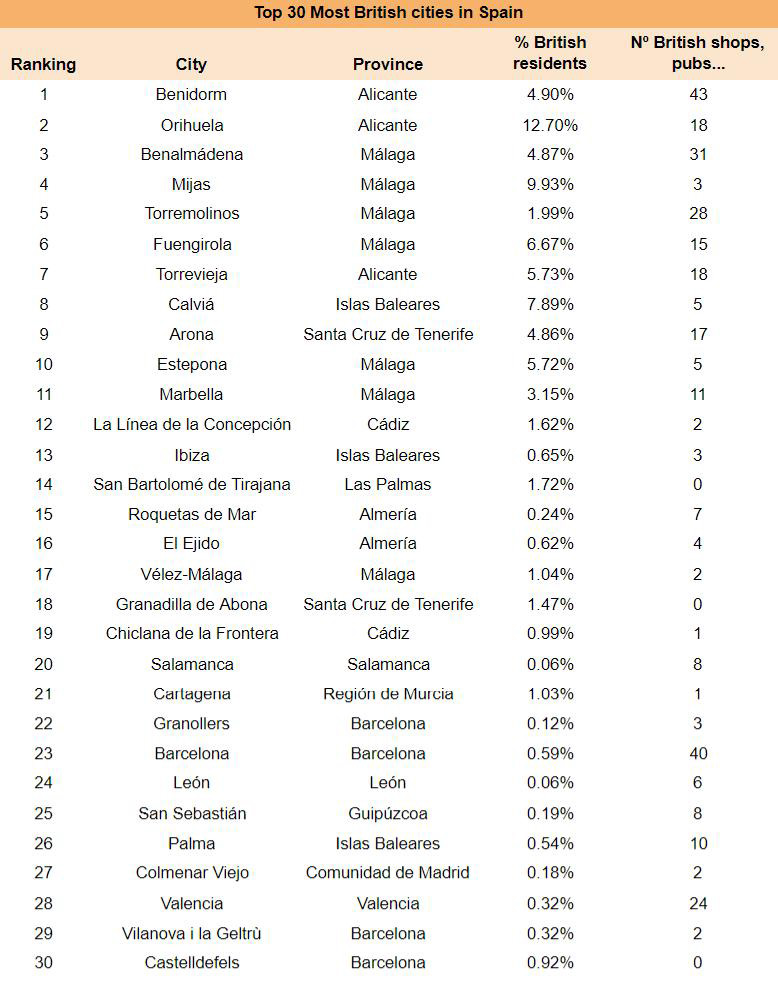
5. Torremolinos, Málaga (Costa del Sol)
The next most British town in Spain another one of our favourite holiday destinations: Torremolinos.
This lively coastal town attracts both young professionals and pensioners who want to make Spain their home. It’s well-connected with Malaga, the capital city of the province, and the southern part of Torremolinos has become a real tourist hub, with plenty of British pubs, restaurants and shops.
The northern part of town still conserves that authentic Spanish 'pueblo' look and feel, so any expats living here can enjoy Spanish living and at the same time you can go down to the coast and order a pint whenever you’re feeling homesick .
Torremolinos British stats:
- Permanent residents with British nationalities: 1,353 (1.99% of the total population).
- British shops, restaurants and pubs: 28.
6. Fuengirola, Málaga (Costa del Sol)
From one Costa del Sol town to another: Fuengirola comes in sixth place! While the town is mostly known as a hub for Scandinavian expats , it still has a large British community.
Because of the many green spaces, the child-friendly, clean beaches and the cosmopolitan atmosphere of the city, Fuengirola has attracted many British families with young children who’ve made the city their home.
The city has everything an expat could wish for: plenty of pubs and restaurants where you can watch Premier League matches and enjoy a pint, many English-language events all year round, and even a local 'Spainsburys' to buy all your favourite snacks from home!
Fuengirola British stats:
- Permanent residents with British nationalities: 5,508 (6.67% of the total population).
- British shops, restaurants and pubs: 15.
7. Torrevieja, Alicante (Costa Blanca)
Moving back to the Costa Blanca, Torrevieja is the next city in the top 10.
This is another resort town, where Brits have been spending their summers since the 50s. No wonder many expats decide to make this town their home when they move to Spain! Most of them do not live in the city centre, rather they chose to live in the suburbs, where you can find entire neighbourhoods that consist only of expats!
Apart from the many pubs (where you can enjoy a decent cider if that’s your fancy), there are several small British supermarkets and even a Dealz and Iceland located in town. Whenever you feel like having a taste of home, your familiar brands and products are waiting for you.
Torrevieja British stats:
- Permanent residents with British nationalities: 4,743 (5.73% of the total population).
8. Calvià, Mallorca (Balearics)
Calvià is the first city in the ranking on one of the Spanish islands!
The actual town, located inland in the south of Mallorca, is small, sleepy, and not very well-known. However, the administrative area of Calvià includes the nearby holiday resorts Magaluf and Palma Nova , much-loved holiday destinations by many of us.
The majority of British expats, however, prefer quieter neighbourhoods like Nova Santa Ponsa and Bendinat as places to settle down. This means that in summer, expats can avoid the crowds at the holiday resorts , but they will only have to drive a few minutes to get to the resort towns with all the pubs, restaurants and shops for those moments of homesickness.
Calvià British stats:
- Permanent residents with British nationalities: 4,068 (7.89% of the total population).
- British shops, restaurants and pubs: 5.
9. Arona, Santa Cruz de Tenerife (Canary Islands)
Next in the ranking is Arona, a sleepy town located in the south of Tenerife.
Just like Calviá, the name might not sound familiar, but its coastal area definitely will ring a bell, with holiday resorts like Los Cristianos and Playa de las Américas dotting the costa of Arona. Most Brits living in Arona settled there, to be able to enjoy the amazing beaches of Tenerife and be a part of the lively British community.
With Tenerife being called the Island of Eternal Spring , it’s no surprise that many Brits decide to make this area their home!
Apart from the high season in summer, Arona is a calm area where you can experience island living with all the comforts from home!
Arona British stats:
- Permanent residents with British nationalities: 4,013 (4.86% of the total population).
- British shops, restaurants and pubs: 17.
10. Estepona, Málaga (Costa del Sol)
We return to the Costa del Sol with the next most British town on the list: Estepona. This town to the west of Marbella is both traditionally Spanish and cosmopolitan at the same time.
Its beautiful old town and amazing beaches draw plenty of visitors from all over the world, but they also draw a lot of expats to this paradisiacal part of Spain.
The expat community in Estepona is very large, about 25% of the general population , and one fifth of them are British.
Combine this with plenty of expat clubs and groups, pubs and shops offering your familiar products, and Gibraltar only a 45-minute drive away , Estepona has definitely earned its place in the list of most British cities in Spain!
Estepona British stats:
- Permanent residents with British nationalities: 4,111 (5.72% of the total population).
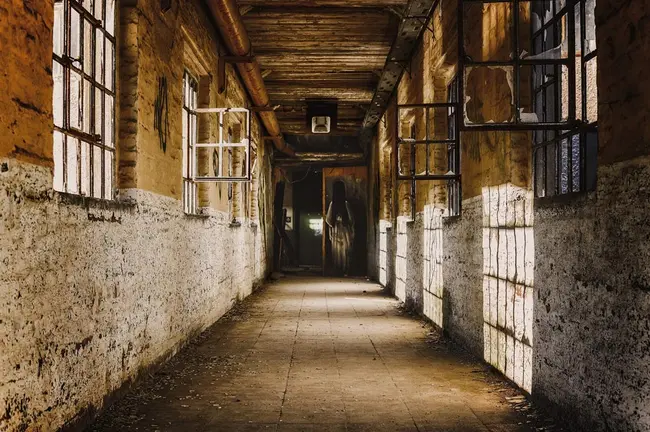
Travel, Tourism & Hospitality
Tourism sector in Spain - statistics & facts
Who visits spain the most, how popular is domestic tourism in spain, key insights.
Detailed statistics
Quarterly travel and tourism balance of payments in Spain 2018-2022
Tourism premises in Spain 2015-2021
Tourism employment in Spain 2020-2021
Editor’s Picks Current statistics on this topic
Inbound tourism volume in Spain 2023, by origin
Tourism contribution to Spanish GDP 2006-2023
Destinations
Inbound tourism volume in Spain 2023, by region of destination
Further recommended statistics
- Premium Statistic Leading European countries in the Travel & Tourism Development Index 2023
- Premium Statistic Tourism contribution to Spanish GDP 2006-2023
- Premium Statistic Tourism sector as share of GDP in Spain 2010-2021
- Premium Statistic Monthly growth rate of tourism GDP in Spain 2022
- Premium Statistic Tourism employment in Spain 2015-2021
- Premium Statistic Tourism employment in Spain Q4 2022, by industry
Leading European countries in the Travel & Tourism Development Index 2023
Leading European countries in the Travel & Tourism Development Index (TTDI) in 2023
Contribution of the tourism sector to the gross domestic product in Spain from 2006 to 2022, with a forecast for 2023 (in billion euros)
Tourism sector as share of GDP in Spain 2010-2021
Contribution of tourism to gross domestic product in Spain from 2010 to 2021
Monthly growth rate of tourism GDP in Spain 2022
Percentage change in the contribution of travel and tourism to GDP in Spain from January to December 2022
Tourism employment in Spain 2015-2021
Number of employees in the tourism sector in Spain from 2015 to 2021 (in 1,000s)
Tourism employment in Spain Q4 2022, by industry
Number of people working in the tourism sector in Spain in 4th quarter 2022, by industry (in 1,000s)
Tourism volume and expenditures
- Premium Statistic Inbound visitors in Spain 2000-2023
- Premium Statistic Inbound tourism volume in Spain 2023, by origin
- Premium Statistic International tourism spending in Spain 2012-2022
- Premium Statistic Domestic trips in Spain 2015-2022
- Premium Statistic Domestic trips in Spain 2023, by destination
- Premium Statistic Domestic tourism spending in Spain 2015-2022
- Basic Statistic Share of travel and tourism spending in Spain 2022, by traveler origin
Inbound visitors in Spain 2000-2023
Number of international visitors in Spain from 2000 to 2023 (in millions)
Number of international tourists in Spain in 2023, by country of residence (in 1,000s)
International tourism spending in Spain 2012-2022
Expenditure of international tourists in Spain from 2012 to 2022 (in billion euros)
Domestic trips in Spain 2015-2022
Number of domestic trips in Spain in 2015 to 2022 (in millions)
Domestic trips in Spain 2023, by destination
Number of domestic trips in Spain in 2023, by autonomous community of destination (in millions)
Domestic tourism spending in Spain 2015-2022
Expenditure of domestic tourists in Spain from 2015 to 2022 (in billion euros)
Share of travel and tourism spending in Spain 2022, by traveler origin
Distribution of expenditure by tourists in Spain in 2022, by main origin
- Premium Statistic Inbound tourism volume in Spain 2023, by travel reason
- Premium Statistic Domestic trips in Spain 2022, by travel reason
- Basic Statistic Share of travel and tourism spending in Spain 2022, by purpose
- Premium Statistic Inbound trips for cultural purposes to Spain 2010-2022
- Premium Statistic Number of enotourists in Spain 2008-2022
- Premium Statistic Number of skiers and snowboarders in Spain 2010-2022
- Premium Statistic Pilgrims on the Way of Saint James 2011-2022
Inbound tourism volume in Spain 2023, by travel reason
Number of international tourists in Spain in 2023, by travel purpose (in 1,000s)
Domestic trips in Spain 2022, by travel reason
Number of domestic trips in Spain in 2022, by travel purpose (in millions)
Share of travel and tourism spending in Spain 2022, by purpose
Distribution of expenditure by tourists in Spain in 2022, by main travel purpose
Inbound trips for cultural purposes to Spain 2010-2022
Number of trips for cultural reasons made by international tourists to Spain from 2010 to 2022 (in 1,000s)
Number of enotourists in Spain 2008-2022
Number of visitors to wineries and wine museums in Spain from 2008 to 2022 (in 1,000s)
Number of skiers and snowboarders in Spain 2010-2022
Number of visitors to ski resorts in Spain from 2010/2011 to 2021/2022 (in 1,000s)
Pilgrims on the Way of Saint James 2011-2022
Number of pilgrims who traveled to Santiago de Compostela, Spain from 2011 to 2022
- Premium Statistic Tourism premises in Spain 2015-2021
- Premium Statistic Share of tourism companies in Spain 2021, by size
- Premium Statistic Main hotel groups in Spain FY2021, by sales revenue
- Premium Statistic Main passenger airlines in Spain 2022
- Premium Statistic Main travel agencies in Spain FY2021, by sales revenue
- Premium Statistic Main restaurants and food stall companies in Spain FY2021, by sales revenue
- Premium Statistic Ecotourism businesses' average revenue in Spain 2022, by type
Number of establishments in the tourism sector in Spain from 2015 to 2021
Share of tourism companies in Spain 2021, by size
Distribution of businesses in the tourism sector in Spain in 2021, by size
Main hotel groups in Spain FY2021, by sales revenue
Leading hotel companies in Spain in FY2021, based on sales revenue (in million euros)
Main passenger airlines in Spain 2022
Leading airlines in Spain in 2022, based on number of passengers (in millions)
Main travel agencies in Spain FY2021, by sales revenue
Leading travel agencies in Spain in FY2021, based on sales revenue (in million euros)
Main restaurants and food stall companies in Spain FY2021, by sales revenue
Leading restaurant and food stall companies in Spain in FY2021, based on sales revenue (in million euros)
Ecotourism businesses' average revenue in Spain 2022, by type
Average revenue of ecotourism establishments in Spain in 2022, by type (in 1,000 euros)
Main destinations
- Premium Statistic Main coastal destinations in Spain 2022, by number of hotel guests
- Premium Statistic Most visited cities in Spain 2022
- Premium Statistic Attendance to Spanish National Heritage sites 2022
- Premium Statistic Attendance to Spanish national parks 2022
- Premium Statistic Cruise ship calls at Spanish ports 2022, by authority
- Premium Statistic Enotourism destination areas in Spain 2022, by region
Main coastal destinations in Spain 2022, by number of hotel guests
Leading beach destinations in Spain in 2022, based on number of overnight tourists in hotels (in 1,000s)
Most visited cities in Spain 2022
Leading city destinations in Spain in 2022, by number of tourists (in 1,000s)
Attendance to Spanish National Heritage sites 2022
Number of visitors to National Heritage sites in Spain in 2022 (in 1,000s)
Attendance to Spanish national parks 2022
Number of visitors to national parks in Spain in 2022 (in 1,000s)
Cruise ship calls at Spanish ports 2022, by authority
Number of cruise vessels calling at ports in Spain in 2022, by port authority
Enotourism destination areas in Spain 2022, by region
Number of Wine Routes in Spain in 2022, by autonomous community
Online travel market
- Premium Statistic Quarterly online revenue of accommodation businesses in Spain 2014-2022
- Premium Statistic Quarterly online revenue of travel agencies & tours operators in Spain 2014-2022
- Premium Statistic Airbnb revenue in Spain 2015-2020
- Premium Statistic Willingness to purchase tourism services online in Spain 2019-2022
- Premium Statistic Average spend on tourism services booked online in Spain 2018-2022
- Premium Statistic Hotel / private accommodation online bookings by brand in Spain 2024
Quarterly online revenue of accommodation businesses in Spain 2014-2022
E-commerce revenue of hotels and similar establishments in Spain from 1st quarter 2014 to 4th quarter 2022 (in million euros)
Quarterly online revenue of travel agencies & tours operators in Spain 2014-2022
E-commerce revenue of travel agencies and tour operators in Spain from 1st quarter 2014 to 4th quarter 2022 (in million euros)
Airbnb revenue in Spain 2015-2020
Revenue of Airbnb in Spain in 2015, 2019, and 2020 (in million euros)
Willingness to purchase tourism services online in Spain 2019-2022
Share of individuals who intended to buy travel products and services online in Spain from 2019 to 2022
Average spend on tourism services booked online in Spain 2018-2022
Average spend on travel products and services bought online in Spain from 2018 to 2022 (in euros)
Hotel / private accommodation online bookings by brand in Spain 2024
Hotel / private accommodation online bookings by brand in Spain as of March 2024
Further reports
Get the best reports to understand your industry.
Mon - Fri, 9am - 6pm (EST)
Mon - Fri, 9am - 5pm (SGT)
Mon - Fri, 10:00am - 6:00pm (JST)
Mon - Fri, 9:30am - 5pm (GMT)
Spain remains top summer destination for British tourists

Despite economic uncertainties and the rising trend of staycations in the UK, according to a recent report by Turespaña , Spain continues to hold its position as the most sought-after summer vacation destination among British tourists.
The Summer Trends report from Turespaña highlights Spain’s consistent high scores in consideration, travel intent, and satisfaction indices, surpassing last year’s figures. Spain notably leads its main competitors, with travel intent figures 7% higher than Italy and Greece , and significantly outpacing Portugal and France.
Canary Islands lead the charge
Throughout 2023, British travel to Spain did not surpass the pre-pandemic levels of 2019, but significant growth was recorded towards the end of the year and into early 2024. This surge in travel is particularly noticeable in the Canary Islands, which have seen an increase in British tourists drawn by the promise of sun and beaches. Despite a cautious economic outlook, Turespaña remains moderately optimistic about continued growth in tourism, although acknowledging the delicate financial situation that might limit British spending power.
Rise in air travel capacity
Airlines are showing confidence in the British market’s demand for Spanish destinations by increasing the number of available seats on flights between Spain and the UK by 8.5% for the current peak season. This expansion is nearly triple the seat increase offered by Spain’s main competitors. Additionally, air capacity to other destinations like Turkey has also seen a substantial rise, growing by 19.1%, as some tour operators are betting on these regions recovering from past conflicts and economic depreciation.
Staycations gaining momentum again
Despite the allure of Spanish vacations, the economic strain is expected to rejuvenate the trend of staycations within the UK, which gained significant traction from 2020 to 2022. Projections for domestic tourism spending in 2024 suggest a resurgence of this trend as Britons might choose to stay closer to home due to financial constraints.
Google searches indicate strong interest
Google search data continues to reflect a strong interest among Britons in traveling to Spain, with significant increases in searches for accommodations and flights compared to other destinations. This demonstrates the ongoing dominance of Spain in the preferences of British holidaymakers.
Also read: Surge in British tourism to Spain surpasses pre-pandemic levels
42nd edition of comic festival in Barcelona starts with record number of artists
King felipe vi swears allegiance to the flag again in presence of princess leonor, you may also like, overtourism in andalucia: these places are saturated, largest seizure of laughing gas ever in europe..., ‘spectacular exepectations’: 2024 will be a record year..., spanish expert warns against plagues of super cockroaches, motorhome tourism in spain on its way to..., congestions, accidents and fire brigade interventions by dana..., solar energy continues to rise in spain, with..., right-wing winner in spain in european elections, new law increases construction pressure on the valencia..., noteworthy: rain and cold throughout spain in the..., privacy overview.
20 of the best things to do in Spain

Mar 7, 2024 • 10 min read

From relaxing on beaches in the Canary Islands to wine tasting in La Rioja, here are Spain's top experiences © Imgorthand / Getty Images
From the snow-dusted, ski-worthy Pyrenees to the glinting golden beaches of the south, Spain unfolds in a series of ever-changing landscapes, traditions, attractions, cuisines and even languages.
Its vast natural spaces are a dream for those who love the great outdoors , while the cities, towns and villages fizz with energy, cultural jewels and mouth-watering gastronomy. But where to start? Whether you’re keen to get stuck into dazzling architecture, cycle to a secret beach or spend your days tasting wines, tapas or olive oils, here are 20 unmissable things to do in Spain.
1. Hike or ride to a secluded beach
Hitting the beach is a national hobby here, and you’ll inevitably fall in love with your own pocket of Spain’s 5470km-long (3400-mile) coastline. Leave the crowds behind by escaping to tranquil, hidden coves that can only be reached on foot, on a bike or on horseback. Head out hiking along Menorca ’s pine-shaded Camí de Cavalls (a restored 14th-century path) to reach turquoise coves; ramble between wild, pebble-studded bays along the Costa Brava; walk to remote sugar-white strands on Andalucía’s breezy Costa de la Luz (also great for kitesurfing); and find protected nudist beaches in Almería’s Parque Natural Cabo de Gata .
2. Taste Spain's best wines
From headlining grape-growing regions such as La Rioja and the cava-making Penedès to Andalucía’s unmatched Sherry Triangle, Spain’s 70 Denominaciones de Origen (Denominations of Origin) roll out a tantalizing line-up of wines. Many wineries here are now experimenting with unusual combinations, pushing forward sustainable production methods and working to recover rare ancestral grapes.
For the most exciting tours, seek out small, independent bodegas (some still run by their founding families) and track down lesser-known wine-making areas such as Galicia’s up-and-coming Ribeira Sacra, Catalonia’s cool Costers del Segre or the innovative El Hierro and Lanzarote DOs in the Canary Islands. Salud!
Planning tip: If you'd prefer to be the designated drinker rather than the driver, here are some other ways to travel around in Spain .

3. Dive into art (and nightlife) in Madrid
Spain’s capital is one of Europe’s greatest cities for art lovers, with a clutch of prestigious galleries where you’ll meet such icons as Picasso’s Guernica ( Centro de Arte Reina Sofía ), Van Gogh’s Les Vessenots in Auvers ( Museo Thyssen-Bornemisza ), and Velázquez’s Las meninas and Goya’s Saturno devorando a su hijo ( Museo del Prado ). More hidden thrills range from sketches by poet Federico García Lorca to mysterious works by Antoni Tàpies. Pre-book tickets online and explore galleries first thing; some even offer "out of hours" tours before the doors officially open.
Planning tip: Save some energy, though – later on, one of the best things to do in the capital city is join the madrileños at buzzy tapas spots, elegant cocktail lounges, laid-back rooftop bars, heaving clubs and more. The party inevitably goes on into the next morning.
4. Feast on local specialties across Spain
A deep love of fabulous food infuses Spain’s soul. You’ll be grazing on pintxos in Bilbao and San Sebastián , crowding into Granada 's tapas bars, seeking out creative Michelin stars in Catalonia, digging into super-fresh Valencian paellas by the Mediterranean, getting to know the country’s 2023 Capital of Gastronomy Cuenca and much more.
Planning tip: For a deep dive into regional Spanish cuisine, join an expert-led food tour. Devour Tours has switched-on guides in Barcelona, Madrid, Seville and San Sebastián, while Annie B’s Spanish Kitchen runs fabulous tapas tours in Cádiz province (an Andalucian foodie hot spot).
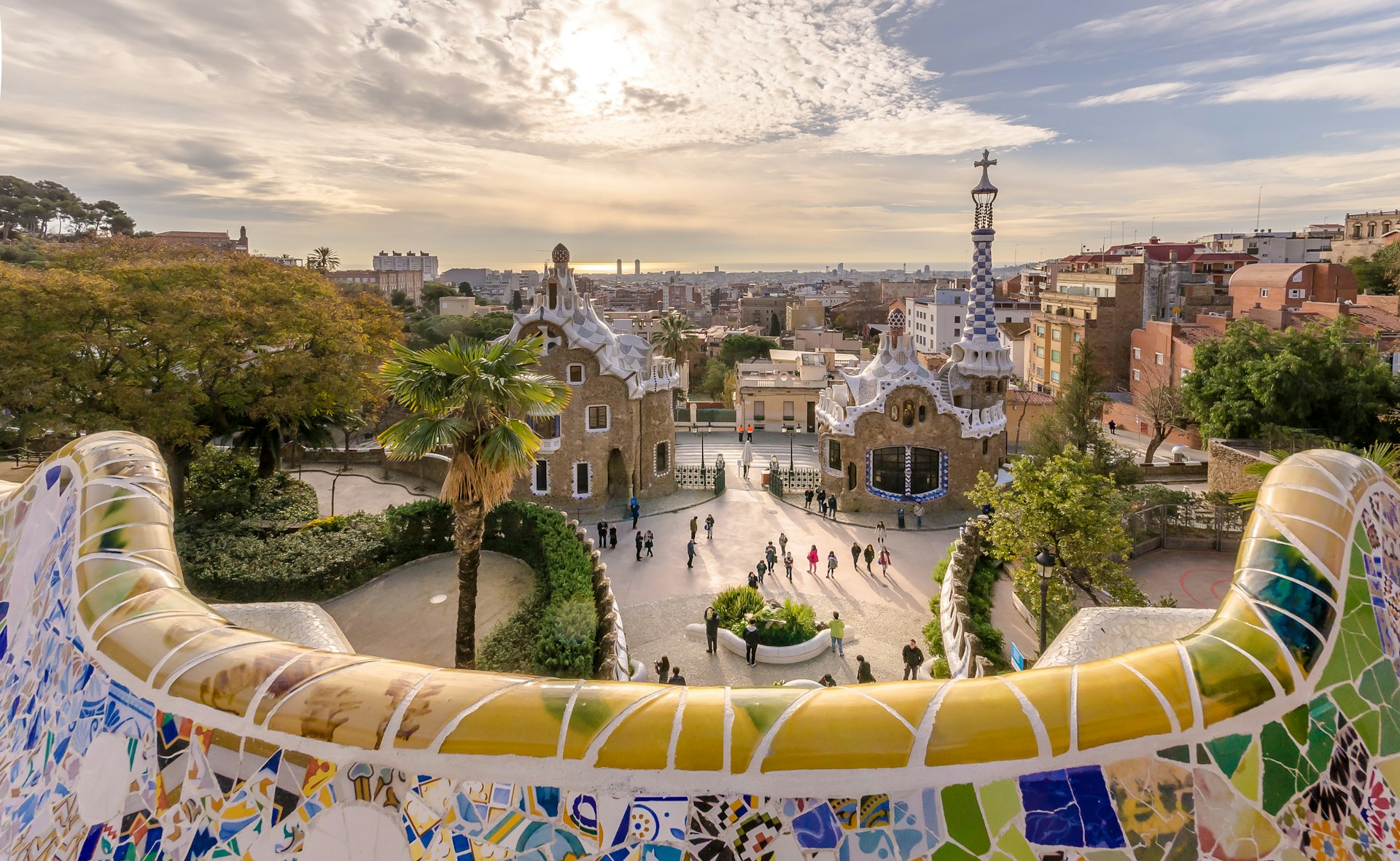
5. Admire Modernisme in Barcelona with an insider
Exploring Catalonia’s irresistible capital with a local architect instantly brings life to the Modernista wonders created by Gaudí, Domènech i Montaner, Puig i Cadafalch and others in the late 19th and early 20th centuries. Look beyond the star acts ( La Sagrada Família , Casa Batlló, Park Güell ), and don’t miss Gaudí’s floral-tiled first commission Casa Vicens (in Gràcia) and other lesser-known Modernista flourishes around L’Eixample and El Raval.
Planning tip: Help combat Barcelona’s much-discussed overtourism issues by visiting outside high season and weekends, staying in officially licensed accommodations , and supporting sustainably focused projects with local roots and powerful initiatives, as well as exploring the rest of Catalonia (from the heights of the Pyrenees to the rice-making Delta de l’Ebre).
6. Road trip around Galicia’s lyrical landscapes
Savoring a glass of crisp albariño with a platter of fresh-as-it-gets seafood is a distinctly Galician moment – just one of many surprises in Spain’s beautifully green northwest corner. Roam well beyond Santiago de Compostela to uncover timeworn stone villages, centuries-old wineries, plunging valleys and over 1000km (620 miles) of wild, windswept coastline sprinkled with sublime beaches, particularly around the Illas Cíes and the Costa da Morte .
Planning tip: While summer brings the warmest weather, June and September are much quieter (always pack an umbrella!).
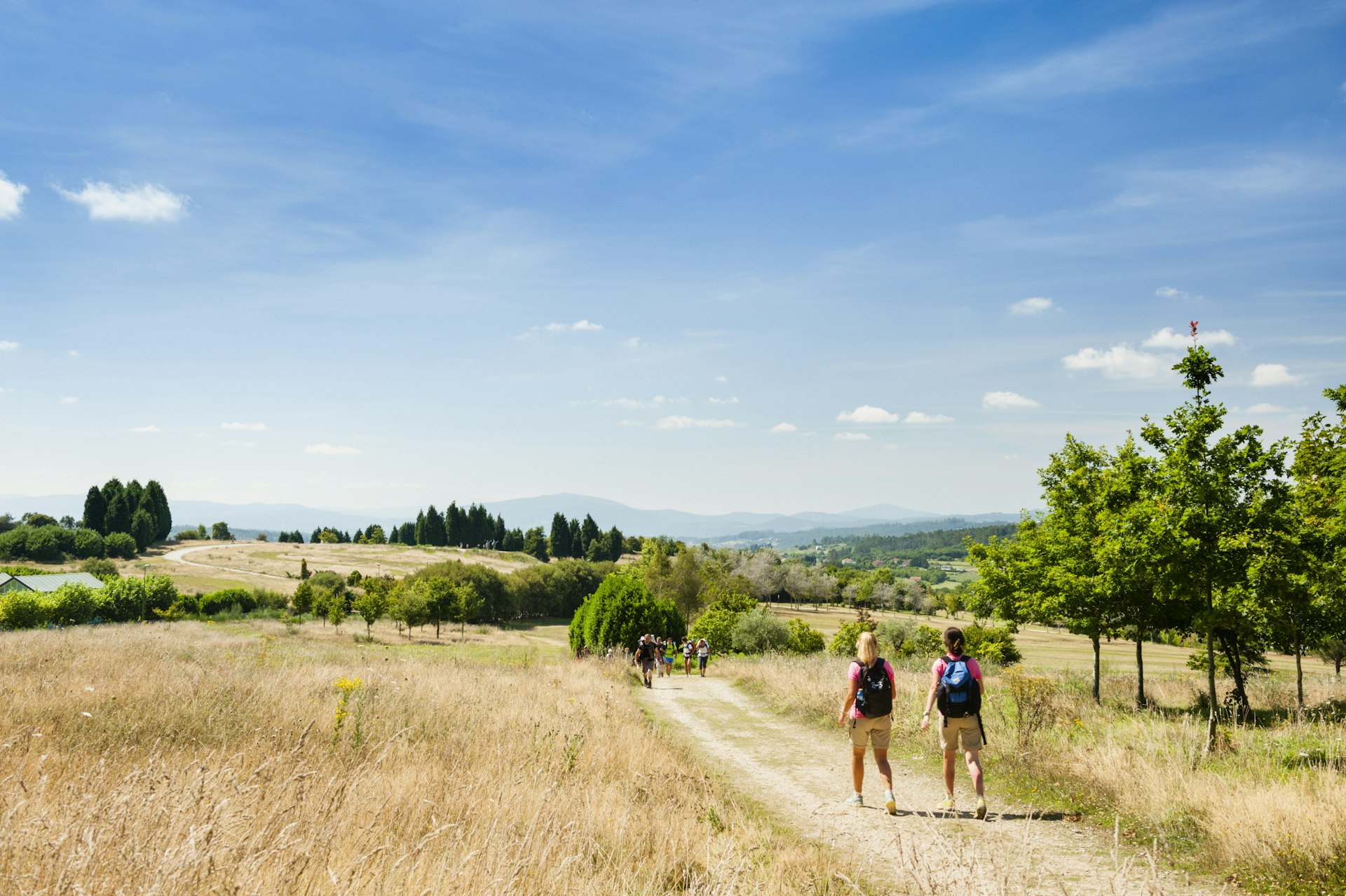
7. Walk an alternative Camino
Finally stumbling into the glittering cathedral in Galicia’s capital Santiago de Compostela , after trekking hundreds of miles along the fabled Camino de Santiago (Way of St James), is a magical moment. Travelers seeking a less-trodden path can swap the popular traditional Camino Francés for the wonderfully rewarding Camino del Norte (Northern Way) or Camino Primitivo . The 600km (373-mile) Norte meanders along and inland from Spain’s northern coastline from Irún, while the challenging 320km (199-mile) Primitivo from Oviedo is believed to be the original Camino, walked by King Alfonso II back in the ninth century.
Planning tip: You can combine the two routes by following an alternative branch of the Norte to Oviedo, then linking up with the Primitivo.
8. Wander off the beaten track in Extremadura
Portugal-bordering Extremadura plunges visitors into one of Spain’s least-touristed corners and is well worth a visit. The secluded Jerte, Ambroz and La Vera valleys reveal half-timbered houses, snow-topped mountains and spring cherry blossom, and there’s outstanding birdwatching in the 180-sq-km (69-sq-mile) Parque Nacional de Monfragüe from March to October. There are also some extraordinary monumental cities, including Cáceres (with its glittering historical core), Trujillo (made wealthy by its high-profile conquistador families) and Mérida (for some of Spain’s most important Roman ruins).

9. Bask in the beauty of Andalucía’s Moorish architecture
Spain’s eight centuries of Islamic rule produced some of its most spectacular architecture, particularly across Andalucía. The unmissable jewels of Moorish Al-Andalus are Granada’s Alhambra , Córdoba’s Mezquita-Catedral and Seville’s Real Alcázar and Giralda , but there’s plenty more. Travel between Córdoba and Granada along the little-known Ruta del Califato (Route of the Caliphate), whose castle-topped villages mark the final medieval frontier between Christian and Islamic Spain; ramble around the majestic alcazabas (fortified palaces) in Almería and Málaga; or head into Huelva’s remote Aracena hills to uncover a rare, perfectly preserved Moorish-era mosque.
10. Enjoy heavenly hikes in every season
Spain’s varied climate means there are outstanding hiking opportunities year-round – from Granada’s snow-dusted Sierra Nevada (perfect in July/August) and northern Spain’s jagged Parque Nacional de los Picos de Europa to the cloud-brushing heights of Aragón ’s Parque Nacional de Ordesa y Monte Perdido and Catalonia ’s Parc Nacional d’Aigüestortes i Estany de Sant Maurici. Along the coast, hit soul-stirringly beautiful trails such as the 200km-long (124-mile) Camiño dos Faros in Galicia or the cliff-top paths in Almería’s Cabo de Gata.
Planning tip: The north shines brightest from June to September/October (book accommodations ahead), while walking in Andalucía is best from March to June and in September and October.

11. Stroll between Andalucía’s white villages
Sunny Andalucía is dotted with impossibly scenic pueblos blancos (white villages), with two main pockets in rural Cádiz and Granada’s Alpujarras valleys – and while these make for fascinating road trips , a series of serene rural walking paths also track between them. Venture off on the long-distance GR7 in the remote eastern Alpujarras (Mairena and Trevélez villages are highlights), or lace up your walking boots in Cádiz’s Sierra de Grazalema, where Moorish castles, rare pinsapos (Spanish firs) and rust-roof villages await.
12. Learn about Spain’s finest olive oil
If you’ve ever wondered where those liquid-gold Spanish olive oils come from, central Andalucía’s Mar de Olivos (Sea of Olives) is a hidden-in-plain-sight joy. Some of the world’s top-tier olive oils are produced among its 15,000 sq km (5790 sq miles) of rolling hills, craggy peaks and silent valleys, particularly across Jaén and Córdoba provinces (where Priego de Córdoba in the Sierra Subbética is the shining star). Stay in one of the region’s peaceful rural hotels, some of which offer home-cooked meals using their own olive oils, and visit local almazaras (olive mills) for tastings, tours and strolls among the olive groves.
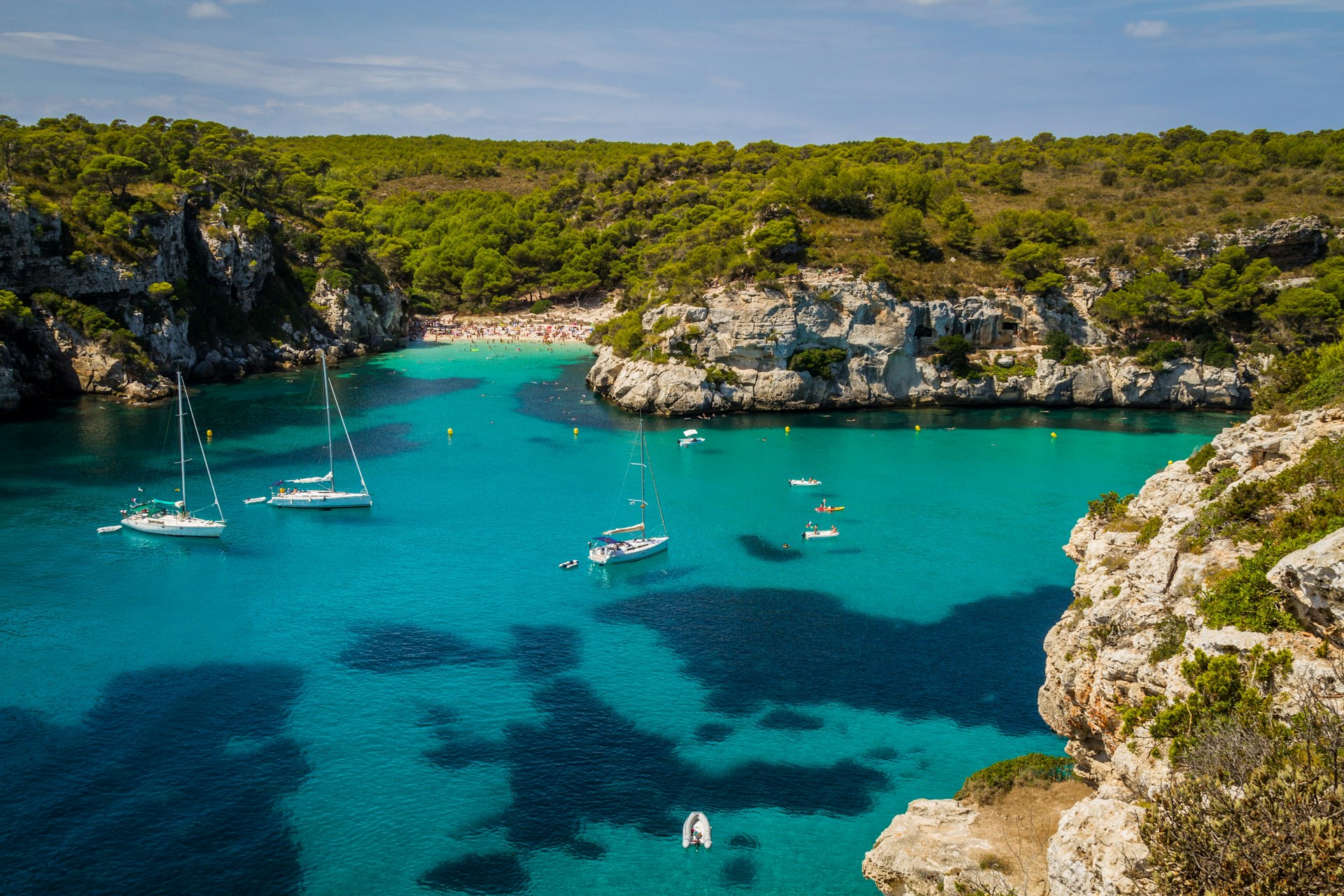
13. Engage in responsible tourism in the Balearics
Forget the dance-until-dawn stereotypes – the four Balearics islands make up one of the Mediterranean’s most blissful escapes, with a strong drive towards responsible tourism that includes a ban on single-use plastics since early 2021. Whether you fancy seductive Mallorca , soothing Menorca , always-chic Ibiza or barefoot-beach Formentera , you can stay in a stylish environment-first agroturisme , learn about the islands’ artisan traditions (from cheese-making to basketry), get involved in beach clean-ups, and soak up the outdoors on hikes, kayak trips, horse-riding adventures and more.
14. Don’t miss the Canary Islands
Around 1000km (620 miles) southwest of mainland Spain, the eight sunbathed Canaries pack in everything from Atlantic volcanic beaches and eerily beautiful pine forests to hikes up the country’s tallest peak, 3715m-high (12,100ft) Teide.
Planning tip: Picking just one island can be a challenge – here’s our in-depth Canary Islands guide to help you narrow it down.

15. Go surfing and exploring along Spain’s green north coast
Some of Spain’s top surf beaches are hidden along the cliff-edged northern coastline, hugging the Basque Country, Cantabria, Asturias and Galicia . While here, discover stone-built villages, extraordinary galleries, ancient cave art, lively cities, local cider and spectacular mountain ranges.

16. Spot rare wildlife in a remote natural wonderland
In recent years, major conservation efforts have brought several of Spain’s most beloved threatened species back from the brink of extinction, including the Iberian lynx, the Cantabrian brown bear and the majestic quebrantahuesos (bearded vulture). Head out in Andalucía’s mountainous Parque Natural Sierra de Andújar for the chance to see a lynx, or venture to the remote Parque Natural de Somiedo in southwest Asturias to (perhaps!) spy a brown bear.

17. Experience flamenco in its Andalucían heartland
There are flamenco shows all over Spain, but the most inspiring place to lose yourself in this soulful ancient art is its southern birthplace: the Cádiz-Jerez-Seville triangle. Hunt down events at local peñas (flamenco clubs), and don’t miss Jerez ’s lively tabancos , where fiery shows are served up alongside sherry poured straight from the barrel.
Planning tip: If you've ever dreamed of learning to dance, this is the ideal place to pick up a few flamenco steps of your own.
18. Wake up in magical accommodations
Fancy slumbering away in a medieval monastery, a fairy-tale castle or a Renaissance palace? Book in at one of Spain’s 98 wonderfully atmospheric paradores , which revolve around sensitively converted buildings packed with centuries of history. Or hunt down a seductive independent stay with its own backstory: a chicly reimagined Modernista mansion in Barcelona, a Balearic farmhouse hidden down a dusty pine-scented track, an artily reimagined home in Cádiz’s Vejer de la Frontera. Many of Spain’s most exciting accommodation spots are attractions in their own right, fueled by inspired, creative design.

19. Get lost in lively, forward-looking Valencia
With its pioneering plans for achieving carbon-neutral tourism , Valencia (Spain’s third-largest city) is becoming a hot tourist favorite. In a short visit, you could be uncovering the Ciutat Vella ’s market-fresh meals, intriguing museums and varied architecture, exploring Santiago de Calatrava’s Ciudad de las Artes y las Ciencias , savoring seafood in El Cabanyal, cycling along the seafront and more.
Planning tip: The Fallas de Valencia festival makes March an outrageously popular month to visit Valencia, but this sunny Mediterranean city is also a perfect autumn or winter escape .
20. Marvel at an ancient (or not so ancient) cathedral
Most Spanish cities unravel around a central plaza overlooked by a formidable cathedral, with styles stretching from Romanesque to Modernista. The country’s most architecturally and spiritually moving cathedrals include León, Toledo , Salamanca , Seville, Burgos , Granada, Segovia , Santiago de Compostela and Palma de Mallorca , as well as Barcelona’s Sagrada Família.
Planning tip: Climbing up a cathedral tower or joining one of an ever-growing number of rooftop tours is a fantastic way to find a fresh perspective on the city below.
This article was first published Sep 30, 2021 and updated Mar 7, 2024.
Explore related stories
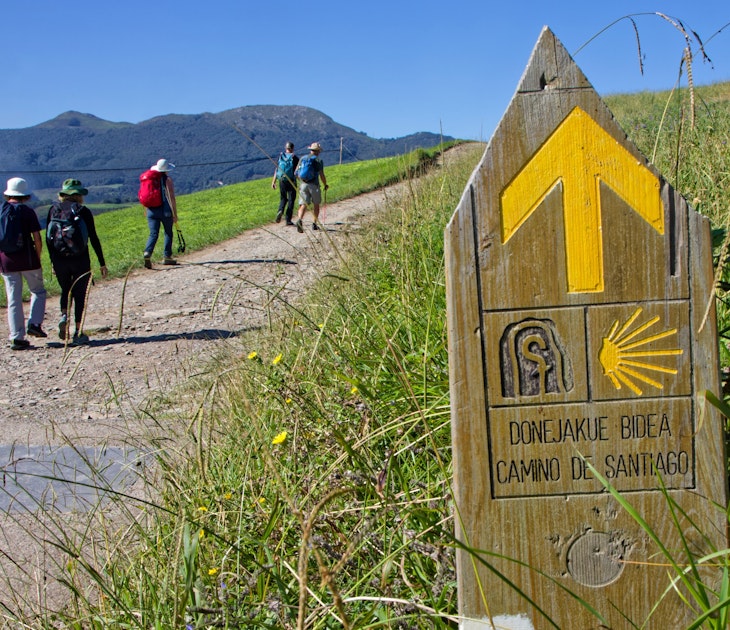
Mar 25, 2024 • 6 min read
Hundreds of thousands walk the Camino de Santiago pilgrimage in Spain every year: here are the most popular routes.

Mar 20, 2024 • 8 min read

Feb 28, 2024 • 3 min read

Feb 10, 2024 • 7 min read

Feb 2, 2024 • 6 min read

Sep 22, 2023 • 11 min read

Aug 22, 2023 • 7 min read

Aug 11, 2023 • 8 min read
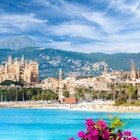
Jul 25, 2023 • 5 min read

Feb 15, 2023 • 6 min read
Cookies on GOV.UK
We use some essential cookies to make this website work.
We’d like to set additional cookies to understand how you use GOV.UK, remember your settings and improve government services.
We also use cookies set by other sites to help us deliver content from their services.
You have accepted additional cookies. You can change your cookie settings at any time.
You have rejected additional cookies. You can change your cookie settings at any time.
Register to vote Register by 18 June to vote in the General Election on 4 July.
- Passports, travel and living abroad
- Travel abroad
- Foreign travel advice
Entry requirements
This information is for people travelling on a full ‘British citizen’ passport from the UK. It is based on the UK government’s understanding of the current rules for the most common types of travel.
The authorities in Spain set and enforce entry rules. If you’re not sure how these requirements apply to you, contact the Spanish Embassy in the UK .
COVID-19 rules
There are no COVID-19 testing or vaccination requirements for travellers entering Spain.
Passport validity requirements
Spain follows Schengen area rules . Your passport must:
- have a ‘date of issue’ less than 10 years before the date you arrive – if you renewed your passport before 1 October 2018, it may have a date of issue that is more than 10 years ago
- have an ‘expiry date’ at least 3 months after the day you plan to leave the Schengen area
Check with your travel provider that your passport and other travel documents meet requirements. Renew your passport if you need to.
You will be denied entry if you do not have a valid travel document or try to use a passport that has been reported lost or stolen.
Visa requirements
You can travel without a visa to the Schengen area , which includes Spain, for up to 90 days in any 180-day period. This applies if you travel:
- as a tourist
- to visit family or friends
- to attend business meetings, cultural or sports events
- for short-term studies or training
The requirements for working in Spain are different.
If you’re travelling to other Schengen countries as well, make sure your whole visit is within the 90-day visa-free limit. Visits to Schengen countries in the 180 days before you travel count towards your 90 days.
If you are visiting Spain and need to extend your visa-free stay for exceptional reasons, such as a medical emergency, you must apply to the immigration authorities (‘Extranjería’) (in Spanish).
Make sure you get your passport stamped on entry and exit.
If you’re a visitor, border guards will look at your entry and exit stamps to check you have not overstayed the 90-day visa-free limit for the Schengen area.
If your passport is missing a stamp, show evidence of when and where you entered or left the Schengen area (for example, boarding passes or tickets) and ask the border guards to add the date and location in your passport.
British nationals living in Spain do not need their passports to be stamped. Actively show your proof of residence, such as the foreigner’s identity card (‘la tarjeta de identidad de extranjero’ or ‘TIE’), when presenting your passport at Spanish border control.
At Spanish border control, you may need to show:
- a return or onward ticket
- proof of your travel insurance
- you have enough money for your stay - the amount varies depending on your accommodation
- a hotel booking confirmation or proof of address if you’re staying at your own property
- an invitation or proof of address if staying with a third party, friends or family, such as a ‘carta de invitation’ completed by your hosts
Using the e-gates
Use the desks staffed by border officers. If you’re aged 18 or over, and airport staff instruct you to, you may be able to use e-gates when they are working.
If you use an e-gate, make sure you get your passport stamped.
Staying longer than 90 days in a 180-day period
To stay longer, you must meet the Spanish government’s entry requirements . If you’re in Spain with a residence permit or long-stay visa, this does not count towards your 90-day visa-free limit.
Read more about passport stamping if you live in Spain .
If you cannot return to the UK before your visa-free limit expires, contact the Spanish government’s national information service . Dial 060 from a Spanish phoneline (in Spanish, with English speaking operators available).
Travelling between Spain and Gibraltar
Spanish border checks can cause delays when crossing between Spain and Gibraltar. If you are travelling to Spain through Gibraltar, check the travel advice for entry requirements for Gibraltar .
There is no charge to enter or leave Gibraltar. Do not hand over money to anybody claiming there is a charge.
Unaccompanied minors
Spanish law considers anyone aged 17 and under to be a minor. If an unaccompanied minor comes to the attention of the Spanish authorities (particularly in connection with criminal incidents or when in hospital), they will be considered vulnerable and may be taken to a minor’s centre until a parent or guardian is found.
Vaccine requirements
For details about medical entry requirements and recommended vaccinations, see TravelHealthPro’s Spain guide .
Customs rules
There are strict rules about what goods can be taken into and out of Spain (PDF) . You must declare anything that may be prohibited or subject to tax or duty.
Taking food into Spain
You cannot take meat, milk or products containing them into EU countries . There are some exceptions such as powdered baby milk, baby food and special foods or pet feed required for medical reasons.
Taking money into Spain
Declare cash or travellers cheques if the value is 10,000 euros or more. You will get a certified declaration to show you brought it in with you. If you do not, your money could be seized when you leave.
Related content
Is this page useful.
- Yes this page is useful
- No this page is not useful
Help us improve GOV.UK
Don’t include personal or financial information like your National Insurance number or credit card details.
To help us improve GOV.UK, we’d like to know more about your visit today. Please fill in this survey (opens in a new tab) .

UK tourists boycott Spain and warn 'be careful what you wish for' after protests
U K holidaymakers are threatening to snub Spain following anti-tourism protests, with a stern warning: "Be careful what you wish for."
Brits have flooded social media with their reactions after thousands of Canary Islands and Balearic locals took to the streets to protest against the soaring cost of living and housing shortages.
One irate British tourist pointed out on social media that tourism is the lifeblood of these islands, especially after 15,000 people rallied in Majorca, demanding that British visitors "go home" and "stay out" "The island earns most of its income from tourism," the Brit emphasised. "They should be careful what they wish for,".
Another chimed in: "What other income have these tourist areas got? Tourism is the main income."
Meanwhile, another suggested a boycott: "Stop going to Spain for 12 months and they will be begging us to come back... Many British tourist spots would appreciate our patronage far more.", reports Birmingham Live .
A different voice highlighted the extent of the local frustration: "Yesterday evening, Palma city centre ground to a standstill as thousands of residents from all over Mallorca protested about the complete saturation of the island not just from the pressures of tourism, but the catastrophic property situation. This means many local people can no longer afford to live here."
Another person said: "The video is out now on the Mallorca Under the Sun YouTube channel. I want to make it clear this is not just about tourism. It's a wider issue."
Yet, one commenter retorted: "Tourists go home is a pretty clear statement wider issue or not.
"I have saved for over a year for my September holiday this year.
"It is the first holiday I've had since 2016. I just don't want to spend my time and money somewhere that neither are wanted. If I had the option I would cancel the holiday and go elsewhere. I certainly won't be back after this year. I can spend my money anywhere and Spanish residents can deal with their wider issues as they see fit."
"Tourists go home is a very inflammatory statement, for someone who comes over twice a year, saving hard earned money for the opportunity, should I look elsewhere for future holidays? "
Another asked. "Can you explain what the wider issue is? I know rental prices are crazy what are the other issues?"
Another questioned: "As someone who has been a 'tourist' for 20 plus years up to 4 x a year and spends in local bars, restaurants and not all inclusive it all comes across as pretty aggressive and inflammatory If the tourists do go home or don't come how will a lot of these businesses survive?"

Expats in Spain face 'anti-British' vandalism as couple claim their car was targeted
A British couple, who moved from Horsham, West Sussex to Marbella four years ago, have said they felt welcomed by very friendly locals, but recently have seen growing 'anti-British' sentiment

- 12:50, 11 Jun 2024
British expats living in Spain have had their cars are being vandalised by locals harbouring an 'anti-British' sentiment, they claim.
The couple, hailing from Horsham, West Sussex, relocated to Marbella four years ago and initially felt embraced by the "very friendly" local community.
However, in June 2023, they encountered an unpleasant surprise during a breakfast outing at upscale restaurant Nobu when their British-plated Volvo XC0 was defaced with pink spray paint by yobs. The pair allege that restaurant staff recounted a similar incident involving another car with a British plate, suspecting it was an act of 'anti-British vandalism'.
For fear of more attention, the couple has chosen to remain unnamed. They've spoken up now due to a perceived growing anti-British sentiment in the country.
Do you live in Spain and have experience of 'anti-British' behaviour? Email us at [email protected]
Among recent mounting frustrations in Spain regarding cheap tourism causing disturbances, tourists have been met with stricter rules as part of the provinces' pushback. The anonymous woman shared her view: "It seems to be that English reg cars are being targeted as part of feeling that there are too many Brits in Spain."
She expressed disappointment, stating: "I think it's quite sad there is so much building happening now and housing is being sold to tourists but mainly where we are it has been to Russians, not Brits." She added: "I just think it's sad Marbella is a lovely place to live and the Spanish are normally very friendly."
The British expat voiced her shock: "I never expected that someone would do something like this to us just because we're British." The business consultants chose Marbella, Spain, as their new home four years ago. Luckily, the couple had a friend who managed to clean up the car for €250 (£210.65) - a job that they admitted would have cost them nearly €1,000 (£842.60) if they had taken it to a mechanic.
Spain has suffered from a series of protests recently, as local anger rises over concerns of the impacts of tourism and overcrowding. Over 10,000 people marched in Majorca over the weekend to express their frustration with the amount of tourists visiting Spain.
Recently, Majorca's capital, Palma, has been the site of protests over growing concerns surrounding over-tourism , a problem which has created a steep rise in rent costs.
Juan Antonio Amengual, the mayor of Calvia where notorious party resort Magaluf sits, has made a plea to British tourists not to abandon the island because of the protests.
He encouraged travellers to continue visiting the popular holiday destination after over 50 percent of people said the recent protests put them off holidaying in Majorca . Although Magaluf can draw in a sometimes hectic crowd of party goers, the mayor said this does not reflect the behaviour of all tourists and has actually created some "tourismphobia".
He said the aim is for "people to enjoy their holidays with respect between tourists and residents" and is campaigning, as part of the Calvia town hall, to promote responsible tourism as the summer season draws near.
Check out more of Daily Mirror's latest travel stories by signing up to our free weekly newsletter.
MORE ON Spain Criminal damage Protests
Can we send you the mirror travel newsletter with weekly travel news and inspiration.
Spain’s tourism industry feeling the loss of British visitors
The number of tourists from the united kingdom fell 82% in 2020 due to the coronavirus pandemic, with the balearic islands hardest hit by the drop.
The Spanish tourism industry is feeling the loss of British visitors , whose numbers plummeted 82% in 2020 from the previous year, according to figures released Wednesday by the National Statistics Institute (INE). The drop is blamed on the coronavirus pandemic, which led to strict restrictions on travel, quarantine rules and the closure of bars and restaurants . Most of Spain is used to receiving tourists from the United Kingdom, be it over summer or in the low season. The drop has hit the Canary and Balearic islands especially hard, as both archipelagos are highly dependent on international tourism and air connectivity.
But it is not just visitors from the UK that are being missed. Spain’s tourism industry is also feeling the loss of tourists from Germany, France, Scandinavian countries, the Netherlands and Italy. The drop in British tourists, however, has been the greatest, both in terms of the number of arrivals and in expenditure. This fall – together with the decline in German tourists – is having a big impact on Spain’s islands.
In the Balearic Islands, the drop in British tourists has been dramatic. Just 223,000 travelers from the UK visited the archipelago in 2020, compared to 3.7 million in 2019 – a fall of 93%. The decline in visitors from Britain, which is the second-largest source country of tourism to Spain, has been keenly felt in popular tourist destinations like Calvià in Mallorca island and Sant Antoni in Ibiza, with many businesses in these areas forced to close .
The numbers of tourists began to nosedive from mid-July, when the British government of Boris Johnson recommended against travel to Spain and imposed a 14-day quarantine on visitors returning from the country in a bid to slow the spread of the coronavirus. The fall in German visitors compounded the loss. Last year, only 720,459 tourists from Germany visited the Balearic Islands, a drop of 84% on 2019 figures. In total, spending by all international tourists in the region plummeted from €14.8 billion in 2019 to just €1.8 billion, a fall of 87%. Indeed, the Balearic Islands is the Spanish region that has seen the biggest drop in all international visitors, with the numbers of foreign tourists from 13.6 million in 2019 to just 1.7 million last year, a drop of 87%.
“Devastating impact”
“The quarantine [on visitors returning from Spain to the UK] was a deathblow. Instead of holding on a little longer, hotels had to gradually close because the impact of the fall in British tourists was devastating. In October, all the facilities were closed,” says Mauricio Carballeda, the president of the Palmanova-Magaluf Hoteliers Association in the Balearic Islands. Hotel occupancy last summer ranged between 30% and 40% – in a normal year, more than 90% of rooms are booked. It was domestic tourism that helped compensate for this loss, with many establishments surviving thanks to visitors from Spain.

The resort town of Magaluf in Mallorca almost exclusively depends on tourists from the UK, in particular, young British visitors looking for a vibrant nightlife. In February 2020, the regional government of the Balearic Islands approved regulation to crack down on so-called “booze tourism ,” where visitors are encouraged to binge-drink alcohol. The rules also targeted so-called balconing , a term that refers to usually inebriated tourists jumping from balcony to balcony in their hotels, or attempting to launch themselves from great heights into swimming pools. But with nightclubs closed since last August due to coronavirus restrictions, there has been no occasion to use this law. Magaluf, which is brimming with bars and restaurants, has become an empty backdrop, visited only by sporadic groups of foreign youths, with its beaches reclaimed by local residents.
The outlook for 2021 is just as uncertain, says Carballeda, who explains that everything depends on how the pandemic evolves over the next few months, whether there are new travel rules, and if a safe travel corridor can be opened between the UK and the Balearic Islands. “Vaccination will be another factor,” he says. “The British are going at a strong rate and we will have to see what level of immunization there is here. The recovery will begin in summer, not before.” Adding to the uncertainty is the impact of Brexit and fear of contagion from the new strains of the coronavirus .
Blow to Canary Islands
In the Canary Islands, the situation in 2020 was somewhat different. The number of international tourists to the archipelago fell 71%, significantly less than in the Balearic Islands. This is partly due to the fact that the region was able to receive visitors last winter, which is its high season. However, its current high season has also coincided with the peak of the third coronavirus wave in Spain and Europe. “January 2021 has been worse than what happened in 2020,” says José María Mañaricúa, the president of Las Palmas hotel association. “All our main markets are closed and have toughened restrictions, and the new strain detected in Britain has been the final blow.”

The devastating impact of the coronavirus pandemic on the Canary Islands’ tourism industry is reflected in the INE data. In the first six months of 2020, the number of British visitors to the archipelago fell 88% – from 2.5 million in 2019 to just under 309,000. It was a hard blow to the sector, which received 4.94 million tourists from the UK in 2019. This represented nearly two thirds of the 15.1 million international visitors the region received that year. But it is not only visitors from Britain that fell in 2020. The number of foreign tourists to the Canary Islands plummeted to 4.8 million last year, a 71% drop from 2019, when 16.8 million international visitors came to the region.
The head of the Canary Islands tourism department, Yaiza Castilla, admitted on Wednesday that the winter high season was a lost cause as Spain and the main markets in Europe were experiencing “one of the worst moments of the pandemic.” Castilla also said she was disappointed with the central Tourism Ministry, which announced a special plan for the archipelago in October. Despite this, Castilla says “no aid has come.”
International visitors fall to record lows
The coronavirus pandemic has taken a toll on all of Spain’s tourism industry . According to the INE, Spain received a historic low of just 18.96 million foreign visitors in 2020. This represents a fall of 77% on figures from 2019, when the country welcomed 83.5 million international tourists, setting a new record high for the seventh year in a row.
Tourist expenditure also fell dramatically last year. Visitors spent €19.7 billion in 2020, down from €91.9 billion in 2019, a drop of 78.5%. This has had a significant effect on the Spanish economy. In 2019, the tourism industry accounted for 12.4% of Spain’s gross domestic product (GDP). Last year, it accounted for just 4%.
Following the Balearic Islands, the regions hardest hit by the fall in international visitors were Catalonia (a drop of 80%), Madrid (77.7%), Andalusia (77.5%) and the Valencia region (73.2%).
English version by Melissa Kitson .
More information
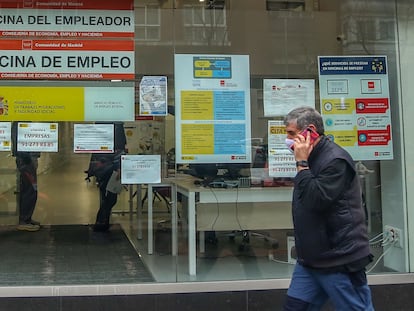
Spain shed 218,953 jobs in January amid third wave of the pandemic
Spain’s bars and restaurants confront their darkest hour.
- Francés online
- Inglés online
- Italiano online
- Alemán online
- Crucigramas & Juegos

- Newsletters
How is Brexit affecting tourism in Spain?
In June 2016, the United Kingdom’s vote in favour of leaving the European Union (EU) opened up a new scenario for the British economy that could have important repercussions for the Spanish economy and particularly for the tourism industry, which receives around 16 million British tourists a year 1 . In this article we examine the impact of Brexit on the number of British tourists visiting Spain and its potential impact in the future under different EU exit scenarios.
- 1. This figure represents nearly 22% of Spain’s total inbound tourism (2018 data).

Three years after the referendum, it is still unclear when and under what terms the UK will leave the EU. It is also true that, after an initial adverse reaction in the financial markets, the British economy has performed better than expected 2 . However, this does not mean that the confusion caused by Brexit has no economic consequences.
In fact, some of the effects of Brexit can already be seen, such as a slowdown in the UK’s economic growth rate since the referendum (from 2.4% in 2015 to 1.4% in 2018). This loss of dynamism has been caused, in part, by the decline in real income due to the sharp depreciation of the pound sterling occurring after the Brexit referendum. This has directly reduced the purchasing power of the British, both in terms of their domestic purchases and also when they travel abroad. In this respect, as the first chart shows, it is not surprising that the tourism demand by UK residents has diminished since mid-2016.
- 2. This was partly due to the actions carried out by the Bank of England, which lowered interest rates and took a number of measures to boost liquidity, helping to ease the initial tension and preventing financial conditions from getting any tighter.
The reduction in the purchasing power of the British as a result of the Brexit referendum has led to a drop in tourism demand from 2016 onwards
Overseas visits by UK residents (cumulative over 12 months)

Given this situation, we might wonder how British tourism demand would have fared without the Brexit effect. To find out, we used the trend in tourist demand in Ireland, which behaved very similarly to the UK trend until mid-2016 (see the second chart). If UK tourist numbers had continued to perform in a similar way to those from Ireland after the Brexit referendum, up to 5 million more UK residents would have travelled abroad between Q3 2016 and Q3 2018. For Spain, the most popular destination among the British, this estimate means that, since mid-2016, approximately 1.1 million British tourists have been lost (around 500,000 a year) 3 . However, it should be noted that UK visitor numbers for Spain have posted a positive trend over the past two years. In fact, Spain has managed to increase its market share (from 20% in Q2 2016 to 22% in 2018) as well as the daily expenditure per visit among the British, a sign that it is still a competitive market.
For the next few quarters, the outlook for the British economy in general and British tourism demand in particular will continue to depend on the Brexit developments and outcome. Ratification of an agreement would avoid a hard Brexit and help to dispel some uncertainty in the short term, although it would not guarantee that the current links between the EU and the UK would remain in the medium and long term. Specifically, a long process will begin post-Brexit during which both parties must define the details of their future relationship. At present, the UK’s position is unclear, a fact that makes it difficult to determine what the future relationship will be like and the implications for economic activity, among other areas.
- 3. For the calculation we used the average market share (21.5% of outbound tourism) between Q3 2016 and Q3 2018.
Comparison of outbound tourism between Ireland and the United Kingdom
Year-on-year change (%)
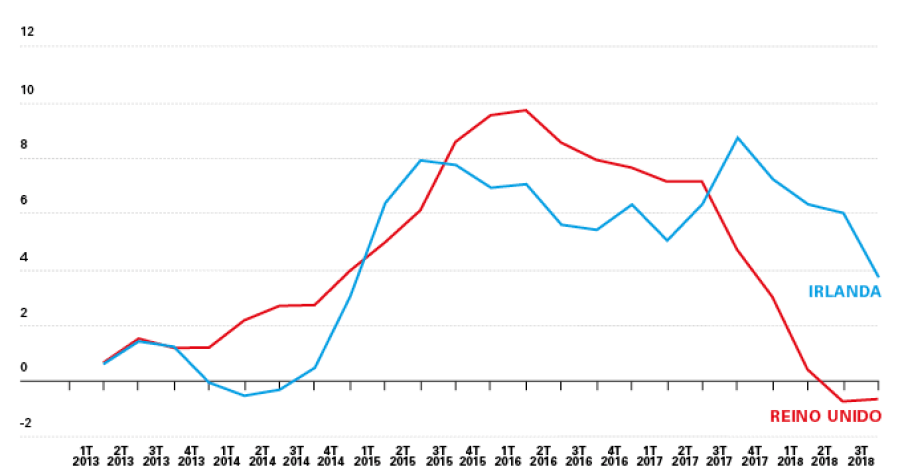
In this context, it may be useful to look at possible future scenarios and analyse their impact on Spain’s inbound tourism from the UK. To this end, we have used the range of scenarios developed by the Bank of England 4 , going from benign environments, where the links between the EU and the UK remain close, to more adverse ones such as a hard Brexit. With these scenarios, and based on our estimates of the elasticity of tourism demand in the United Kingdom (with respect to GDP and the exchange rate) 5 , we have passed the impact of Brexit onto the number of British tourists coming to Spain.
In the most favourable scenario, the United Kingdom would ratify the exit agreement negotiated with Brussels and a relatively long transition period would be implemented, during which both parties would negotiate as close a future relationship as possible (without any significant increase in trade barriers between the two). In this case, the Bank of England estimates that, thanks to the reduction in uncertainty, the impact on UK GDP could even be positive in the medium term (+1.75%) 6 and that the pound sterling would appreciate by 5%. If this scenario occurs, we believe the impact on British tourism would be positive and that visits to Spain would increase by around 800,000 (4.9%), cumulative up to 2023.
- 4. These scenarios are not forecasts because they do not cover all possible assumptions and effects of a future economic relationship other than the current one or a hard Brexit. See Bank of England (2018): EU withdrawal scenarios and monetary and financial stability. A response to the House of Commons Treasury Committee.
- 5. Change in the number of tourists in response to changes in real GDP and the nominal pound-euro exchange rate.
- 6. Up to 2023. Effect on GDP in relation to the base scenario valid in November 2018.
At CaixaBank Research we have analysed four possible scenarios to estimate the future impact of Brexit on the number of British tourists coming to Spain, from the most benign to the most adverse
A second scenario, less favourable than the previous one, envisages a future trade relationship that is less close with the EU. Specifically, after the transition period, border controls and more regulatory barriers would be introduced, leading to a slight fall in GDP in the medium term (–0.75%). However, the reduction in uncertainty would push up the pound slightly (by 2%). In this case, our estimates indicate that the impact on the number of British tourists coming to Spain would be negligible: British visits would decrease by approximately 150,000 (1.0%) up to 2023.
The other two scenarios contemplate the possibility that the UK and EU will not reach an agreement and that trade between them will be governed by WTO terms (with tariffs and non-tariff barriers to trade and customs checks). Neither do these two scenarios rule out the possibility of some of the production chains currently in operation breaking down, or certain episodes of financial instability. Depending on the degree of disruption, the Bank of England estimates the impact on the UK’s GDP could range from −4.75% (less disruptive scenario) 7 to −7.75% (highly disruptive or disorderly scenario) 8 . Both scenarios also assume a sharp depreciation of the pound (between 15% and 25%, depending on the severity of the scenario). Should any of these scenarios occur, we estimate the impact on British tourism outflows to Spain would be significant and negative, ranging from 13.8% to 22.7%, cumulative up to 2023.
- 7. The United Kingdom is able to replicate teh trade agreements with third countries that it had due to its EU membership. There are also certain disruptions at border controls.
- 8. After leaving the EU, the United Kingdom loses all its trade agreements with third countries. The United Kingdom also faces severe disruption at its borders due to customs checks.
Impact of Brexit on British tourist visits to Spain
Million visits

The impact of Brexit on the tourism sector will therefore largely depend on the type of commercial relationship established between the UK and the EU. However, the sensitivity of British tourism in each of these scenarios may be amplified or reduced depending on the institutional arrangements agreed, since they could make Europe’s tourism industry less competitive. One such important provision is the United Kingdom’s access to the European Common Aviation Area 9 , as without this prices for flights between the UK and continent are likely to increase (due to less competition). Also, if a soft Brexit is not achieved, particularly costly measures could be introduced for British tourists, such as the loss of free health coverage in the EU and restrictions on their movements (including border controls and visa requirements for travelling to the EU).
- 9. This single market for aviation services allows any airline from an EU country to operate on any route within the EU and set the fares it wants. If the United Kingdom loses access to the ECAA, British airlines would be treated as third-country operators and their licences, certificates and registration would no longer be valid in the EU.
The impact of Brexit on Spain’s tourism industry will largely depend on the trade relations established between the UK and EU. In the short term, British tourism is likely to be less dynamic than in the years prior to the referendum
In summary, the estimated impact of Brexit on British tourism demand varies considerably depending on the scenario and hypotheses considered, illustrating the high degree of uncertainty surrounding the UK’s exit from the EU and its possible economic implications. In this respect, an agreement between both parties that minimises uncertainty and guarantees an orderly transition towards a new model of commercial relations without unnecessary barriers would succeed in mitigating a large part of this impact. However, over the next few months, Brexit confusion is likely to keep the rate of economic activity in the UK contained and the British pound volatile. In such a situation, British tourism is likely to continue suffering from the effects of Brexit and be less dynamic than in the years prior to the referendum.
To read below

Brexit: from brothers to distant cousins

The new unknowns of Brexit in 2020

The United Kingdom’s potential for Spain after Brexit
Plan Your Trip to Spain: Best of Spain Tourism

Essential Spain

Dig Into Spain
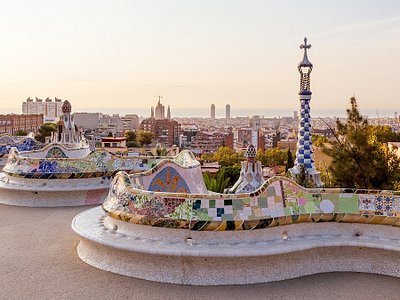
Spain Is Great For
Art & history.

Eat & drink

9 of the best road trips in Europe
Book your individual trip , stress-free with local travel experts
Select Month
- roughguides.com
- best-road-trips-europe
Plan your tailor-made trip with a local expert
Book securely with money-back guarantee
Travel stress-free with local assistance and 24/7 support
written by Rough Guides Editors
updated 10.06.2024
If you've got wheels, wanderlust and a spot of time, a road trip in Europe offers the chance to see the continent at a relaxed pace. From the sunny shores of Portugal to the dungeons of Dracula's castle in Transylvania in Romania , the following itineraries can be easily combined, shortened or altered to suit your wayfaring tastes. Here are 9 of the best road trips in Europe.
1. From the glamour of Paris to the glorious grit of Berlin (France to Germany)
2. surf and sun in the basque country and beyond, 3. the arctic fjords from bergen to trondheim (norway), 4. the unexplored east: bucharest to vienna (romania to austria), 5. to portugal and beyond.
- 6. High-altitude adventure on Germany's Alpine Road
7. Godly beaches and ancient highways in Greece
8. london to edinburgh and the highlands, 9. the secret shores of sicily and calabria, planning your european road trip, travel ideas for spain, created by local experts.

9 days / from 2468 USD
Andalucía Explored
Discover the best of Andalucía's breathtaking palaces, churches, museums, vineyards, and more, as you travel through spectacular scenery dotted with pueblos blancos and bordered by rugged mountains and coast en route to Granada, Seville, Ronda and Jerez de la Frontera.

4 days / from 643 USD
A culinary experience in Seville
Explore the cuisine and surroundings of Seville in Andalucia. From Iberian ham over sherry wines to the production and secrets of olive oil, this tour is an ideal weekend getaway. Decide yourself if you prefer a rental car or a chauffeur-driven car to explore the beauty of Andalucia.

10 days / from 3791 USD
Spanish Honeymoon
Discover Andalusia, starting with the cultural city of Seville, then on to Córdoba and Granada, home of the stunning Alhambra Palace. Next you'll visit Granada and the Albayzin Arab quarter, then enjoy a stunning hot-air balloon ride, before ending your trip with a luxury boat trip from Marbella!
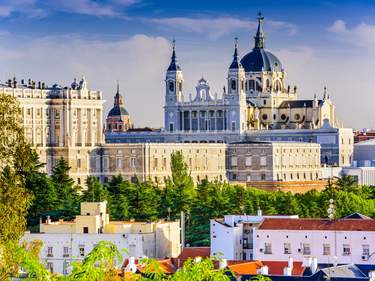
5 days / from 1480 USD
Made for Madrid
Take to the Spanish capital for art, culture and a taste of life in the city, Madrileño-style. Explore age-old churches and pretty plazas, stroll through the lovely Buen Retiro Park and visit captivating Toledo. Then, come sundown, discover the city's vibrant barrios and lively nightlife.

4 days / from 1399 USD
A Madrid getaway
Spend four days discovering the wonders of Spain's capital Madrid: from fascinating museums like El Prado and Reina Sofia over exploring unknown corners with your private guide to a day trip to the surroundings, this itinerary packs the best of Madrid.

18 days / from 4590 USD
Hidden Spain - From Barcelona to Basque Country
Do you want to explore highlights in Spain while staying in nature at the same time? Look no further. Start your Spanish adventure in Barcelona before heading off to the mountains - drive your rental car to Andorra and further on to Basque Country. Decide between driving yourself or guided tours.
Leaving Paris , cruise through the gentle hills of Champagne and Reims to the quaint capital of Luxembourg City, and explore the small country’s many fairy-tale castles.
Trier , Germany’s oldest city, is less than an hour’s drive north-east, where ancient Roman baths and basilicas stand marvellously intact.
Spend a night in the medieval village of Bacharach in Riesling wine country, before wandering the riverside streets of Heidelberg . Onward to Nuremberg , and then to Leipzig for a strong dose of hot caffeine with your Cold War history, classical music and cake. Make sure to check out the complete guide to the UNESCO world heritage sites in Germany to visit some of the palaces and gardens , industrial heritage sites or historic town centres along the way.
Detour to Dresden , restored after the ruinous bombing in WWII, before ending in one of Europe’s coolest cities: the creative paradise of Berlin .
For a longer trip, start in London and take the ferry or channel tunnel to France , transforming this road trip into a pilgrimage between Europe’s holy trinity of artistic hubs.
- Best for: Culture vultures looking for bragging rights.
- How long: 1–2 weeks.
- Insider tip: If you’re driving in France, you’ll legally need to keep safety equipment in your car (a reflective vest and hazard signal). Additionally, be prepared with a cash or credit card to pay the French road tolls on the way.

Panoramic aerial view of Trier featuring the famous Trierer Dom © S-F/Shutterstock
Begin in Bilbao , where the surrounding beaches boast world-class surf, then drive along the Atlantic to San Sebastian : watersports wonderland and foodie heaven. From there venture south through the rugged wilderness of the Pyrenees to Pamplona . Climb the Roncesvalles Pass before looping back to the coast. Or continue along the Bay of Biscay to the attractive seaside resort of St-Jean-de-Luz.
Travellers with a little extra money lining their pockets will be happy to spend days lingering on boho beaches in Biarritz, while those looking for gargantuan swell can do no better than the surfer hangouts in Hossegor.
Finish the trip northward in Bordeaux – the Pearl of the Aquitaine – where café-strewn boulevards and world-class wines are your trophies at the finish line.
Bilbao to Bordeaux
- Best for: Sun-seeking surfers and foodies.
- How long: 1 week.
- Insider tip: Check seasonal surf forecasts before you go, and look into coastal campsites if you're on a budget.The Basque roads beg for a convertible – or a colourful camper van with surfboards strapped to the roof.

Biarritz City and its famous beach © Boris Stroujko/Shutterstock
Kick off in the city of Bergen , on Norway’s southwest coast, and make way past mighty fjords to Voss and the colossal Tvindefossen waterfall. Then check the world's longest road tunnel off your to-do list, a cavernous 24.5km route under the mountains.
Catch a quick ferry across the Sognefjord and carry on to the Fjaler valleys, a land of glaciers and snowy mountain peaks, to the waterside towns of Stryn or the mountain village Videster.
Work your way northward to the well-touristed towns of Geiranger, down the death-defying hairpin turns of Trollstigen (literally “The Troll Path”).
After the descent, ferry across the Eresfjord to Molde and Kristiansund. For the final stretch, drive the iconic Atlantic Road with its roller-coaster-style bridges, and conclude with some well-deserved downtime upon the still waters and stilted homes of Trondheim .
- Best for: Thrill seekers and landscape junkies.
- How long : 5–7 days.
- Insider tip : This route is best tackled from late spring to early autumn. If you plan on road tripping during Norway’s winter months, be sure to check online ahead of time for road closures due to snow and ice.
- Ready to explore Norway? Start preparing by finding out how to get there .

The idyllic surroundings of Stryn in Norway © Mikolajn/Shutterstock
Start from Bucharest , travelling northward through the Carpathian mountains to Transylvania, and make a mandatory stop at Bran Castle (claimed to be the old stomping grounds of Dracula himself).
Take the Transfagarasan mountain road, one of the most scenic routes in the world, towards the age-old cities and countless castles of Sibu, Brasov and Sighisoara. Then set course to the unexplored architectural gems of Timisoara.
Carry on towards the tranquil hot springs and hip ruin pubs of bustling Budapest, and be prepared to stay at least a few days. Depart for Bratislava – a capital full of surprises – from where it's only an hour further to the coffeehouses and eclectic architecture of Vienna .
- Best for: Anyone looking for a break from the conventional tourism of western Europe.
- How long: 7–12 days.
- Insider tip: Exercise caution when driving through tunnels. Though the weather outside may be fine, tunnels are often slippery.

Bran (Dracula) castle in Transylvania, Romania © Kanuman/Shutterstock
Start in Braga , before driving south to the medieval town of Guimarães , a UNESCO World Heritage site. Then it’s onward to the breathtaking "second-city" of Porto , though it's nothing less than first-rate. Check here for the best places to stay in Porto .
Drive east to the vineyards and steep valleys of Penafiel and Amarante before hitting the coastal road to the vast white beaches of Figueira da Foz - among the best beaches in Portugal . From here it’s on to Peniche, Ericeira and then Lisbon : the country's vibrant capital that's on course to beat out Berlin for Europe’s coolest city. Check out the best areas to stay in Lisbon as well as the best places to eat to match your taste.
Drive south to Sagres , Arrifana and Carrapateira. After soaking up the sun on the picturesque shores of the Algarve, wrap this road trip up in the Mediterranean dreamland otherwise known as Faro .
If you’ve still got itchy feet when you reach Faro, take the ferry from nearby Algeciras in Spain to Morocco . Imagine the satisfaction of parking your ride in the desert village of Merzouga, before exploring the Sahara – that's right, it would feel awesome.
- Best for: Beach bums and oenophiles.
- How long: At least 10–14 days.
- Insider tip: As Portugal is among the more affordable destinations in Western Europe, this can be an especially great trip for travellers on a budget .

Oliveira Square, Guimarães © Patricia Henriques Barros/Shutterstock
6. High-altitude adventure on Germany's Alpine Road
The Alpenstrasse, or Alpine Road, is your ticket to a bonafide Bavarian odyssey: a safe route through the unforgettable vistas of Germany 's high-altitude meadows, mountains, crystal-clear lakes and cosy village restaurants. Start lakeside at Lindau on the Bodensee and head to Oberstaufen for a therapeutic beauty treatment in the country’s “Capital of Wellness”.
Venture eastwards to the Breitachklamm gorge, where the river Breitach cuts through verdant cliffs and colossal boulders. Carry on to the town of Füssen – famous for its violin makers – stopping along the way at any quaint Alpine villages you please. The iconic Neuschwanstein Castle , the same structure that inspired Walt Disney to build his own version for Cinderella, isn’t far off either - one of those places even more beautiful in winter.
Speaking of winter, hit the slopes of Garmisch-Partenkirchen for some serious skiing if the season’s right. Stop at Benediktbeuern on your way to the medieval town of Bad Tölz, then up through the stunning wilderness scenes of the Chiemgau Alps before ending in the regional capital of Munich . If you’re missing the mountain roads already, carry on to Salzburg in Austria and stop in the ice caves of Werfen on the way.
Lindau to Oberstaufen
- Best for: Outdoorsy types.
- How long: 5–8 days.
- Insider tip: Give your road trip an extra purpose and pack your skis or snowboard. Garmisch-Partenkirchen ski season starts early December and ends early May. In the summer months, you can go hiking or climbing instead.

Church in Benediktbeuern © FooTToo/Shutterstock
Start in Athens and take the coastal roads south through the Athenian Riviera to Sounion, situated at the tip the Attic peninsula. Watch a sunset at the Temple of Poseidon, then drive northward through mythic mountains to the fortress of Kórinthos before posting up in the legendary city of Mycenae (home of Homeric heroes).
If you’re craving a luxurious seaside stay, look no further than the resort town of Nafplio. If not, carry onwards through the unforgiving landscapes to Mystra, the cultural and political capital of Byzantium.
Want more? Then it’s on to Olympia, sporting grounds of the ancients, and the mystic ruins of Delphi. Loop back towards Athens, approaching the city from the north.
- Best for: Sun-worshippers,and anyone who’s ever read Homer or watched overly action-packed flicks such as Troy and 300 .
- How long: 5–10 days, though it’s easy to trim a version of this road trip down to a long weekend.
- Insider tip: If you’re parking in central Athens keep an eye out for coloured parking spaces – these are reserved for locals, so if you park here you’ll get a ticket.

Aerial view of Nafplio city in the summer © Olga Kot Photo/Shutterstock
Leave the hectic pace of England ’s capital London behind. Make for Oxford, home of the world’s oldest English-language university, and a place of storied pubs where the likes of J.R.R Tolkien and Lewis Carrol regularly wet their whistles.
If you’ve got the time, it’s a quick drive to the cottages of the Cotswolds - check our guide to the prettiest villages to visit . If not, cruise up to Stratford-Upon-Avon, birthplace of Shakespeare.
Take the two-and-a-half-hour drive north to Manchester for a city fix and watch a football match. Carry on north to the Lake District National Park, one of the most beautiful places in England . Drink in the scenery that inspired England’s finest romantics, then head across the Yorkshire dales to the quirky medieval lanes of York, founded by the Romans nearly 2000 years ago.
From there it's north again past tiny villages to the majestic wonders of Edinburgh . If you’re craving the rugged comforts of the highlands go to Stirling, Inverness, or the Western Isles – worth the drive indeed. And if you are going by electric car, check out this great guide to plan your electric car road trip in Britain .
London to Inverness
- Best for: Locals that want to feel like foreigners, and foreigners that want to feel like locals.
- How long: 5–10 days.
- Insider tip: Destinations like Stratford-Upon-Avon and York (not to mention London) are true tourist hotspots in the summer. Plan your road trip for spring or autumn and you’ll enjoy the beautiful scenery along with fewer crowds.

Catbells in The Lake District © Michael Conrad/Shutterstock
Hit the gas in the Sicilian capital of Palermo, the biggest historic centre in Italy after Rome and arguably the country’s most chaotic metropolis.
Adventure onwards along the Tyrrhenian coast to the golden sands of Cefalù – a great holiday spot for families, with a mellow medieval town centre to boot.
Get to the island’s heartland and the ancient city of Enna. Surrounded by cliffs on all sides, and built atop a massive hill, you'll feel as though you've walked on the set of Game of Thrones . Head southeast to the shores of the Ionian Sea and dock in Siracusa, once the most important in the western world while under ancient Greek rule with much of its historic architecture intact.
Then it’s up to Catania for a trip to molten Mount Etna, the tallest active volcano on the entire European continent.
Finish the trip in Messina, or ferry across into the Italian province of Calabria where rustic mountain villages, friendly locals and the idyllic sands of Tropea and Pizzo await – refreshingly devoid of foreigners.
- Best for: Anyone looking for a truly authentic Italian experience, and of course, hardcore foodies.
- How long : 6–12 days.
- Insider tip: Remember that southern Italy can get very hot in July and August. Avoid the heat of the day with a leisurely lunch (go easy on the wine if you’re driving!) and travel in the early morning or evening instead.
Want to explore Europe even more? We have prepared the most convenient European itineraries for you to explore the continent.

Cefalù on a beautiful day with clear skies © Cezary Wojtkowski/Shutterstock
Planning for the perfect trip to Europe can take hours of research. Why not allow us to take can of the planning and booking, allowing you to make the most of your trip? Our tailor made trips are created by local travel experts and are completely customised to your preferences.
- Nature & Wildlife
- Coasts & Islands
- National Parks & Reserves
- Off the Beaten Track
- History Culture Heritage
- Architecture
- Inspiration
- Travel Tips
Planning your own trip? Prepare for your trip
Use Rough Guides' trusted partners for great rates
Find even more inspiration here

Ready to travel and discover Spain?
Get support from our local experts for stress-free planning & worry-free travels.
Tue 11 Jun 2024
2024 newspaper of the year
@ Contact us
Your newsletters
Election Latest
Brits in spain fearful after calls for ‘black list’ of foreign residents, british expats who have moved to spain report feeling targeted and afraid to go out in public amid a backlash against tourism and foreigners.

British retirees who have lived in the Spanish town of Girona since 2019 say they fear being “black listed” as UK nationals and are afraid to speak in public after local activists called for a census of foreign residents amid a surge in anti-tourist sentiment.
John, 67, and Rosalind, 78 – which are not their real names – said they seldom leave their homes except for quick trips to run errands and when they do, they keep a low profile and avoid speaking in the hope that nobody identifies them as Brits.
“There’s a real climate of anti-expat, and particularly anti-British sentiment in Girona nowadays, as in most Spanish tourist areas heavily populated by foreigners. Many people look at us sideways, and occasionally spit after we pass by on the street,” said John, a former engineer.
Last month, the Plataforma Decreixement Turístic Girona , (Platform for the reduction of tourists in Girona) which is a group of local activists who are against over-tourism in the city took to the streets calling for the local council to create a list of foreign residents “ alien ” to the local culture.
The group is calling for an end to mass tourism and has published a manifesto that rails against wealthy “expats”, who have allegedly turned parts of the city into “totally elitist ghetto areas with their backs to people’s basic needs”.
“Among us expats, we have now called it a ‘black list’ for we are considered ‘rogue’ residents and tourists. Sounds like a dictatorship-style approach to over-tourism, if that’s what they’re against,” John said.

Pedro Sanchez, a 55-year-old Girona activist who wants all expats out told i that foreigners are “spoiling and exploiting Spain’s beauty without any respect for local culture”.
Girona’s case is just the latest in a series of protests against expats and tourism that have been held in traditionally popular holiday retreats luring many British nationals among others, such as the Balearic islands of Palma de Majorca and Ibiza.
Girona, where expats make up around 20 per cent of the local population of around 100,000 residents, is renowned for its stunning architecture, golden sandy beaches and as the backdrop for hit television series Game of Thrones .
The area is a hub for cyclists and more than 30 cycling businesses have been graffitied in recent days with slogans like “go home” and “enough with mass mass tourism,” The Local reported .

Malaga bans more holiday flats in latest tourism crackdown
“Just because of the misbehavior of some loud, crazy drunk Brit partygoers we are now all branded as ‘monsters’ that should be evicted from the country,” said Rosalind, a former interior designer.
Rosalind and John, who are both widowed, each bought a two-bedroom cottage in the medieval district of Girona and took up Spanish residency just before Brexit came into force.
They say the anti-expat sentiment is pushed by the “envy of low-earning Spaniards who think the Brits can buy all they want with their sterling,” Rosalind said.
“It’s more of a social class war, rather than a clash between different nationalities and cultures. Many locals who follow far-right, populist groups in Catalonia, are mad that we get to buy the most gorgeous homes and come here to live the dream under the Spanish sun, where the cost of living for us, but not for them, is low,” John said.
Rosalind said last week she reported to the police that two of her garden chairs had been robbed and her French pink roses totally destroyed in what she claimed was an “act of vandalism”.
“I forgot to take the chairs inside one evening, my house is on one floor with just a short brick wall separating it from the outside alley. Someone likely jumped over it into my property,” she said.
Meanwhile, John has changed his daily routine to avoid walking his dog too late at night. He now runs errands at midday when more people are around and takes the dog out for a last round just before sunset.
“I used to feel safe here in Girona. Catalonia, as opposed to Spain’s south, has always been more liberal but with the separatists and extremists gaining more power by the day, political chaos leads to an uncertain outlook,” he said.
The news of activists calling for a “census” has been a topic of conversation among their local community, with both Rosalind and John hearing locals talk about it at the bakery and bar.
“I used to regularly go out once a week with other Brit friends for tapas and paella, now we feel uneasy and prefer to meet at mine or their place. We feel targeted,” says Rosalind.
Girona’s ajuntamento (City council) has said a census already exists with 330 British nationals registered in Girona.
Local police did not comment on reports of vandalism targeted at British expats
Most Read By Subscribers
UK Edition Change
- UK Politics
- News Videos
- Paris 2024 Olympics
- Rugby Union
- Sport Videos
- John Rentoul
- Mary Dejevsky
- Andrew Grice
- Sean O’Grady
- Photography
- Theatre & Dance
- Culture Videos
- Fitness & Wellbeing
- Food & Drink
- Health & Families
- Royal Family
- Electric Vehicles
- Car Insurance Deals
- Lifestyle Videos
- UK Hotel Reviews
- News & Advice
- Simon Calder
- Australia & New Zealand
- South America
- C. America & Caribbean
- Middle East
- Politics Explained
- News Analysis
- Today’s Edition
- Home & Garden
- Broadband deals
- Fashion & Beauty
- Travel & Outdoors
- Sports & Fitness
- Sustainable Living
- Climate Videos
- Solar Panels
- Behind The Headlines
- On The Ground
- Decomplicated
- You Ask The Questions
- Binge Watch
- Travel Smart
- Watch on your TV
- Crosswords & Puzzles
- Most Commented
- Newsletters
- Ask Me Anything
- Virtual Events
- Betting Sites
- Online Casinos
- Wine Offers
Thank you for registering
Please refresh the page or navigate to another page on the site to be automatically logged in Please refresh your browser to be logged in
Ryanair flies British couple to the wrong country after ‘unbelievable’ airport mistake
Exclusive: andrew and victoria gore were part of a 12-strong family trip to spain’s costa brava – but ended up thousands of miles away, article bookmarked.
Find your bookmarks in your Independent Premium section, under my profile

Sign up to Simon Calder’s free travel email for expert advice and money-saving discounts
Get simon calder’s travel email, thanks for signing up to the simon calder’s travel email.
Andrew Gore was looking forward to a treat on his 47th birthday: flying with his wife Victoria and 10 other people for a week’s holiday on Spain ’s Costa Brava.
But after an extraordinary mix-up at Bristol airport , the couple from Mountain Ash in South Wales were put on the wrong Ryanair plane – away from their family and friends.
Despite having boarding passes showing their destination as Barcelona , they were flown to Kaunus in Lithuania .
To reach their intended destination, they then had to endure a 150-mile Uber ride across an international frontier to Riga in Latvia, and a 1,400-mile flight to Spain.
“I was distraught, and scared. I didn’t stop crying,” said Ms Gore. “It was my worst nightmare.”

Andrew and Victoria Gore, also 47, had done everything right. They had booked a package holiday with Sunshine.co.uk, costing over £1,500 for the week. The deal included flights from Bristol to Barcelona on Ryanair.
As Andrew is an amputee and Victoria is autistic, they booked special assistance at Bristol airport and arrived in good time for the 8.15am flight on Saturday 25 May.
Ms Gore said: “We have been away lots of times and always had special assistance, so this was nothing new to us.
“The minibus took us to the Ryanair plane and they checked our boarding pass and let us on the plane.”
The couple had been assigned separate seats on their original flight. Ms Gore, believing she was on the aircraft shortly departing to Barcelona, said: “I asked the air hostess if we could sit together as I’m scared of flying.
“She checked our boarding pass again and put us in the second row.”
They were on the wrong plane, while their family – who did not have special assistance – boarded the right aircraft.
“We didn’t see our family getting on, so asked if they were on board, and were assured they were,” said Ms Gore.
The Boeing 737 took off for the 1,400-mile trip to Kaunus. “We had a couple of drinks, then went to sleep as we had been up early,” said Ms Gore.
“As we landed, it was very clear we were in Lithuania.”
They alerted the crew, and according to Ms Gore the captain was “furious” when he learnt what had happened. He instructed staff to provide care and onward transportation for them.
With no direct flights from Kaunus to Barcelona, ground staff booked them on the following day’s flight from Riga, 150 miles north across the Latvian frontier. They were also assigned a hotel, and an Uber to take them there.
They flew as normal to Barcelona next day and were taken to their hotel on the Costa Brava.
But they had no baggage: it had been removed from the Bristol-Barcelona flight when, through no fault of their own, they did not board the plane.
It finally arrived two days later.
Andrew and Victoria Gore have now returned to South Wales. “I’ve heard of suitcases going to the wrong place‚ but not people. In this day and age, there are so many checks. How could it happen?
“They looked at our boarding passes so many times. It’s unbelievable.”
The Independent contacted Ryanair, who blamed the incident on ABM, who provide special assistance at the airport.
“ These passengers booked special assistance for this flight from Bristol to Barcelona (25 May), but the ABM agents boarded them onto the wrong flight to Kaunas despite gate signage clearly displaying the flight’s destination,” a spokesperson said.
“Upon arriving at Kaunas Airport, these passengers notified the crew that they were on the wrong flight and Ryanair immediately arranged for both passengers to be reaccommodated on the next available flight to Barcelona, which was scheduled to depart Riga Airport the next morning (26 May).
“As these passengers did not board their flight to Barcelona, their bags were removed from the aircraft in line with standard safety procedures. When it was realised that these passengers had been misrouted and were rerouted to Barcelona, their bags were rushed from Bristol Airport to Barcelona.
“We sincerely apologise to these passengers for any inconvenience caused as a result of ABM’s error, and have assured that they will be fully compensated by Bristol Airport.”
A spokesperson for Bristol Airport said:
“We’ve worked with our business partners to investigate this incident. All customers have their travel documentation checked by the airline or their ground handling agent before boarding an aircraft. Since being informed of the issue, Bristol Airport has worked with our airline handling agent and special assistance provider to investigate the circumstances and to introduce improvements for the future.
“We will contact the customer with information to direct their complaint to the correct business partner for resolution.”
Join our commenting forum
Join thought-provoking conversations, follow other Independent readers and see their replies
Subscribe to Independent Premium to bookmark this article
Want to bookmark your favourite articles and stories to read or reference later? Start your Independent Premium subscription today.
New to The Independent?
Or if you would prefer:
Want an ad-free experience?
Hi {{indy.fullName}}
- My Independent Premium
- Account details
- Help centre

IMAGES
VIDEO
COMMENTS
Spain continues to be the top holiday destination for the British, according to a study by the Secretary of State for Tourism. This market ranked first in terms of tourist expenditure in our country in the first quarter of 2024, accounting for 16.4% of the total, and in terms of tourism flows (18.4% of the total).
More than 18 million British people visited Spain in 2019, roughly a quarter of the U.K. population. ... Tourism accounts for more than 10 percent of Spain's annual gross domestic product, the ...
Recent data from Spain's National Statistics Institute (INE) shows that eight out of 10 new residents moving to Málaga are currently foreigners. It's not just individuals changing the face of ...
Benidorm British Haven on the Spanish Coast. Sits on Spain's Costa Blanca. In 2023, Trip Advisor rated Benidorm as Spain's most popular holiday town for Brits. Four main beaches, including Levante, Poniente Beach, Mal Pas Beach and La Cala Beach. Use Alicante airport, which is 58 kilometres or 50 minutes' drive away.
Spain is set to lobby the EU over a rule that limits British tourists to 90 day visits. Spain wants to scrap the 90 day limit for UK visitors, allowing them to stay in the country indefinitely ...
Spain is one of the most popular destinations for British tourists, but the country is feeling the backlash of the cheap flights and sunny climes as large numbers of visitors are causing big ...
Tourism in Spain is a major contributor to national economic life, contributing to about 11.8% of Spain 's GDP (in 2017). [1] Ever since the 1960s and 1970s, the country has been a popular destination for summer holidays, especially with large numbers of tourists from the United Kingdom, Ireland, Turkey, France, Germany, Italy, the Benelux, and ...
From 1 March 2022, driving licences issued by the UK authorities will be valid for driving in Spain for a period of six months. In the case of short trips or tourism, it will be six months running from the date you enter the country. For British citizens resident in Spain, this period runs from the date on which legal residence in the country ...
The first two months of 2024 has seen foreign tourist totals rise by 15.6% to reach almost 9.8 million. The average expenditure per tourist was €1,347 euros, with an annual increase of 8.5%, and ...
UK TOURISTS visiting Spain during the first 10 months of 2023 totalled just under 15.5 million people- an annual rise of 14.3%. The British market has played a leading role in Spain's tourist ...
Spain is one of the most popular destinations for British holidaymakers seeking some sun and sea.. But the country has long suffered from a minority of tourists who disrespect local culture and ...
The ranking reveals that: The Costa Blanca town of Benidorm is the most British city in Spain! The Costa del Sol dominates the ranking, with 5 towns in the top 10. Brits prefer to settle in popular tourist destinations, staying in areas that are already well-known and avoiding inland cities. The Union Jack.
Tourism sector in Spain - statistics & facts. Spain is an established tourism market in Europe - the region with the most tourist arrivals worldwide - and globally. In 2022, Spain registered ...
Some 307,000 British citizens live in Spain as of 2022, according to figures from epdata. A vast majority tend to be older, heading south to spend the later stages of life somewhere that is ...
BBC Europe Correspondent, Spain. The new year has brought storms to Spain's Costa del Sol - the sunshine coast is being lashed by rain and wind. It's not what thousands of British expats signed up ...
Throughout 2023, British travel to Spain did not surpass the pre-pandemic levels of 2019, but significant growth was recorded towards the end of the year and into early 2024. This surge in travel is particularly noticeable in the Canary Islands, which have seen an increase in British tourists drawn by the promise of sun and beaches.
14. Don't miss the Canary Islands. Around 1000km (620 miles) southwest of mainland Spain, the eight sunbathed Canaries pack in everything from Atlantic volcanic beaches and eerily beautiful pine forests to hikes up the country's tallest peak, 3715m-high (12,100ft) Teide.
have a 'date of issue' less than 10 years before the date you arrive - if you renewed your passport before 1 October 2018, it may have a date of issue that is more than 10 years ago. have an ...
This research note analyzes the immediate impact of the Brexit on British tourism in Spain using the Bayesian structural time series models framework. The results obtained show that between July 2016 and September 2017, Brexit has not produced any initial negative effect on the arrival of British tourists or on their spending in Spain.
Spain welcomed 12.2 million UK tourists between January and July 2023, 6 percent less when compared to the same period in 2019, according to data released on Monday by Spanish tourism association Turespaña. This represents a decrease of 793,260 British holidaymakers for Spain so far this year. Conversely, the number of Italian (+8 percent ...
One irate British tourist pointed out on social media that tourism is the lifeblood of these islands, especially after 15,000 people rallied in Majorca, demanding that British visitors "go home ...
Image: No credit) British expats living in Spain have had their cars are being vandalised by locals harbouring an 'anti-British' sentiment, they claim. The couple, hailing from Horsham, West ...
The Spanish tourist office has hit back at criticism, explaining that tourists don't need to worry. To enter Spain, British tourists may be asked to prove that they can spend at least €100 per ...
The Spanish tourism industry is feeling the loss of British visitors, whose numbers plummeted 82% in 2020 from the previous year, according to figures released Wednesday by the National Statistics Institute (INE).The drop is blamed on the coronavirus pandemic, which led to strict restrictions on travel, quarantine rules and the closure of bars and restaurants.
In June 2016, the United Kingdom's vote in favour of leaving the European Union (EU) opened up a new scenario for the British economy that could have important repercussions for the Spanish economy and particularly for the tourism industry, which receives around 16 million British tourists a year1 . In this article we examine the impact of Brexit on the number of British tourists visiting ...
By Management. 1,181. Spain. From sun-drenched archipelagos and bustling urban cities to snowcapped mountains and semi-arid deserts, Spain epitomizes geographical diversity. As the meeting point of the Atlantic Ocean and Mediterranean Sea, this vast country offers some of Europe's most dramatic landscapes, as well as some of its tastiest cuisine.
Here are 9 of the best road trips in Europe. 1. From the glamour of Paris to the glorious grit of Berlin (France to Germany) 2. Surf and sun in the Basque Country and beyond. 3. The Arctic fjords from Bergen to Trondheim (Norway) 4. The unexplored east: Bucharest to Vienna (Romania to Austria)
June 9, 2024 6:00 am (Updated 2:15 pm) British retirees who have lived in the Spanish town of Girona since 2019 say they fear being "black listed" as UK nationals and are afraid to speak in ...
Ryanair flies British couple to the wrong country after 'unbelievable' airport mistake. Exclusive: Andrew and Victoria Gore were part of a 12-strong family trip to Spain's Costa Brava ...